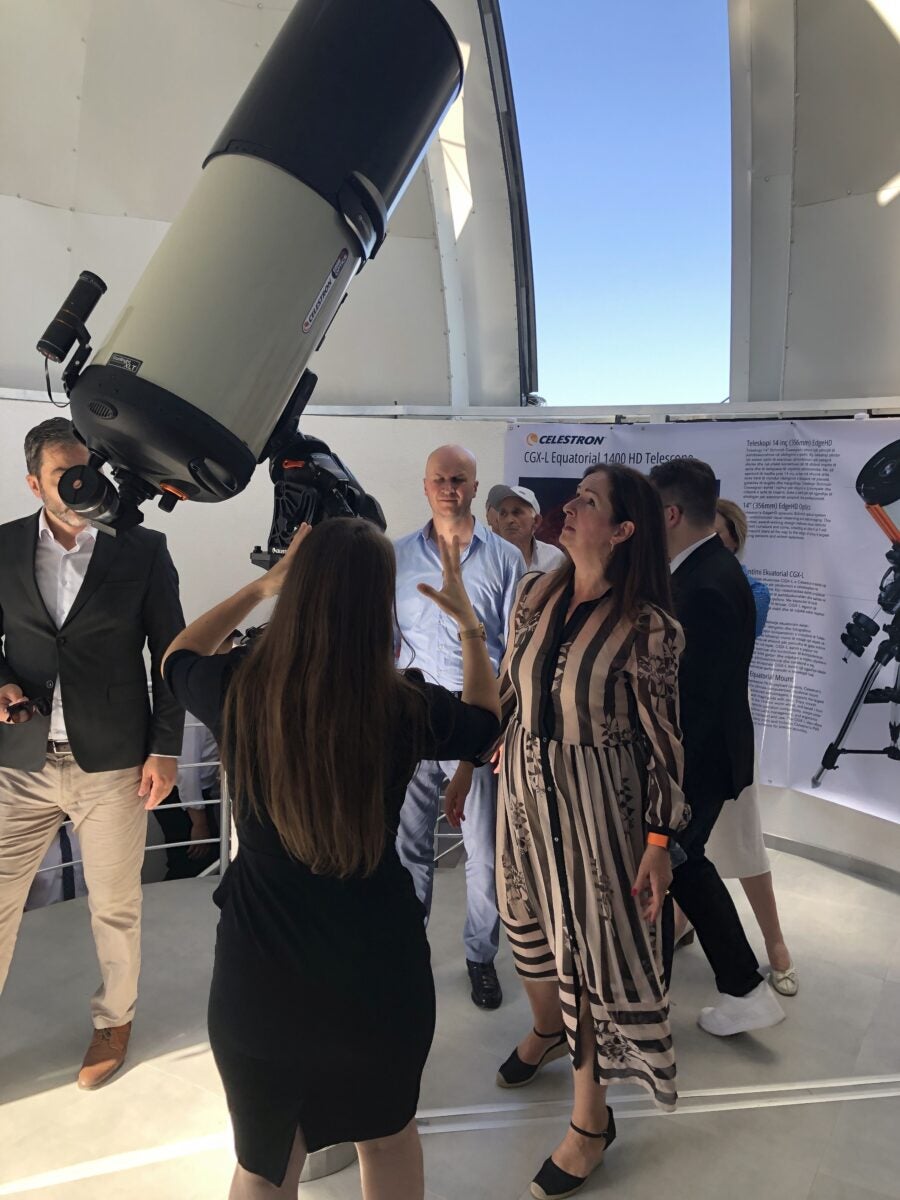
Pranvera Hyseni shows off a Celestron 14 to Arberie Nagavci, the Kosovo minister of education. Credit: Robert Reeves
On June 15, I traveled to the Balkan country of Kosovo to install a 14-inch telescope donated by Celestron to that young country’s new national observatory and planetarium. The installation of this telescope was a historic occasion, marking the completion of Kosovo’s first national observatory. The facility has enormous potential to cultivate and harness the Kosovar public’s enthusiasm for astronomy and the night sky.
But although I came to Kosovo to assist with an astronomy education project, I am the one who received the real lesson — and it was not about astronomy. Over the next five days I discovered an amazing, friendly country where the people are industrious, hard-working, inquisitive, and curious about the universe around us.
I also found that Kosovars hold Americans in high regard and are especially appreciative of American military veterans, of which I am one. It was the U.S.-led NATO liberation of Kosovo that earned America a special place in the hearts of Kosovars.
For all of these reasons, I never felt more welcomed far, far from home, as I did in Kosovo, and echoes of the Kosovar soul resonated everywhere we went.
A star is born
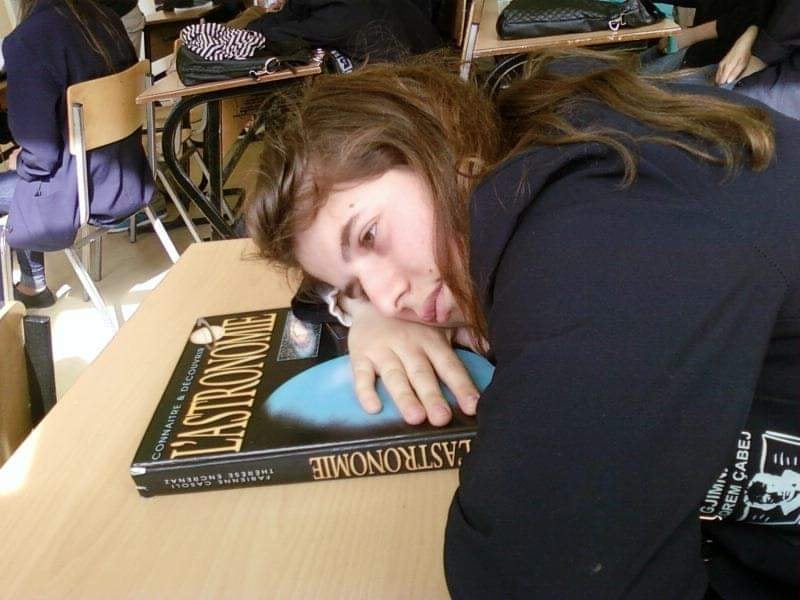
The seeds of this journey were planted 10 years ago when Pranvera Hyseni, a high school girl in Kosovo, harnessed the inquisitiveness and ingenuity of her fellow young Kosovars and established the Astronomy Outreach of Kosovo, now known worldwide as “AOK”.
Pranvera mastered the use of social media and caught the attention of astronomers all over the globe. Her enthusiasm and ambition pushed AOK to such heights that the organization receives astronomy equipment donations from all around the world, and its logo flies aboard the International Space Station. When AOK held a public star party, it was not unusual for hundreds of people to show up in a town square to view the Sun or the Moon and planets.
I was so impressed with Pranvera’s astronomy outreach efforts that when she turned 21, I invited her to the United States to speak at the Texas Star Party in 2017. Pranvera’s drive and determination shone brilliantly when she parlayed the speaking invitation into a four-month stay where she visited dozens of astronomy organizations. Her efforts culminated the next year when she was accepted into the planetary sciences master’s degree program at the University of California at Santa Cruz. Upon completing her masters, Pranvera was accepted into a doctorate program at the same university where she now conducts research on meteorites and asteroids.
Throughout her amateur and professional astronomy career, Pranvera never lost her love for her home country and the outreach work of AOK. So strong is Pranvera’s passion for outreach that I openly advertise her as the next Carl Sagan.
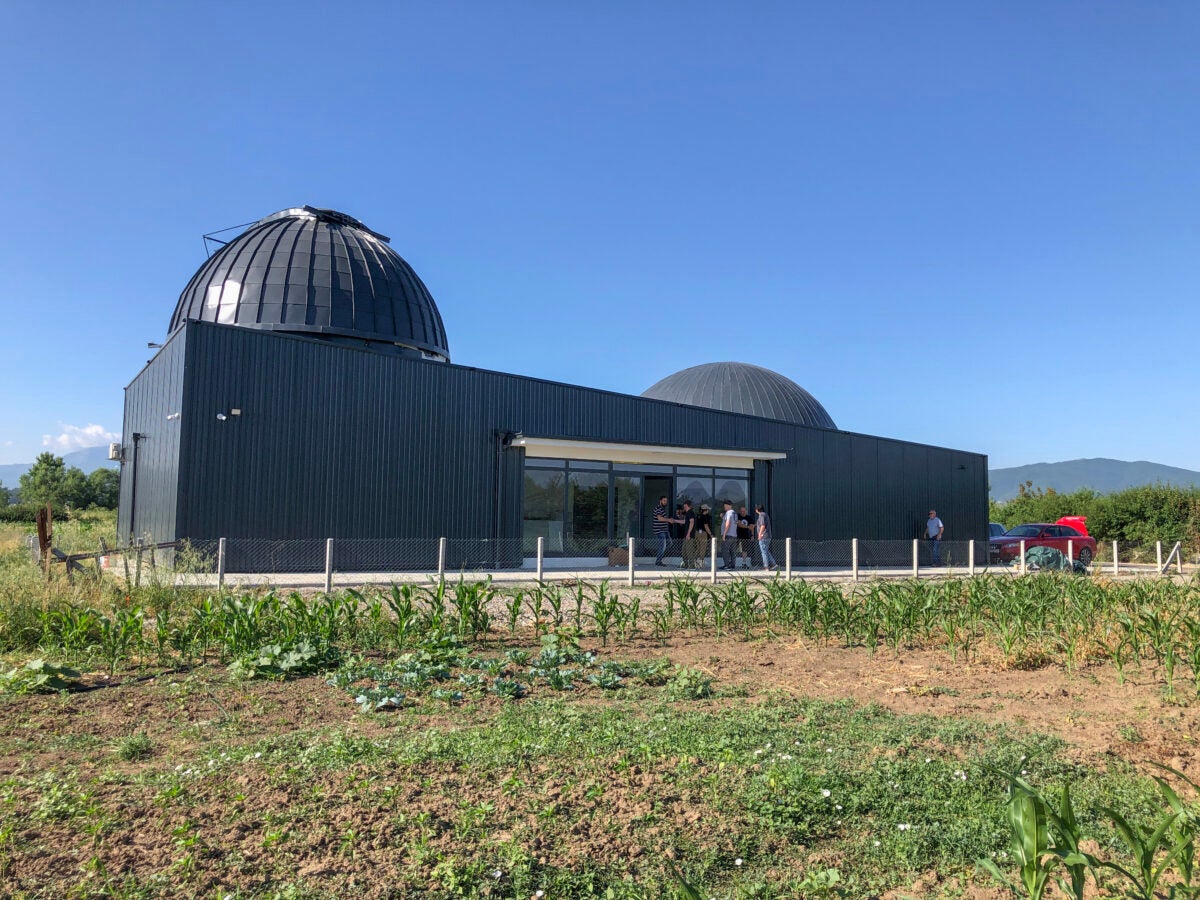
After years of proposals to the Kosovar government, Pranvera’s goal of establishing a national observatory and planetarium in Kosovo was finally realized. In a case of dreams meeting possibilities, ground was broken for the facility last year. Celestron supplied the C14 telescope to be installed under the facility’s 23-foot (7 meters) dome. To my surprise, I was asked by Celestron to travel to Kosovo to install and commission the instrument. Thus, seven years after I invited Pranvera to the U.S., life turned full circle, and I found myself traveling to Pranvera’s home country.
Seeing first light
I flew 6,200 miles (10,000 kilometers) to Istanbul to connect to a flight to Pristina, the Kosovar capital. Pristina is a rapidly growing city where I spotted 20 construction cranes pushing the city skyward. Though I was far from home, there were familiar sights: KFC and Burger King restaurants are prevalent and much of the commercial signage is in English.
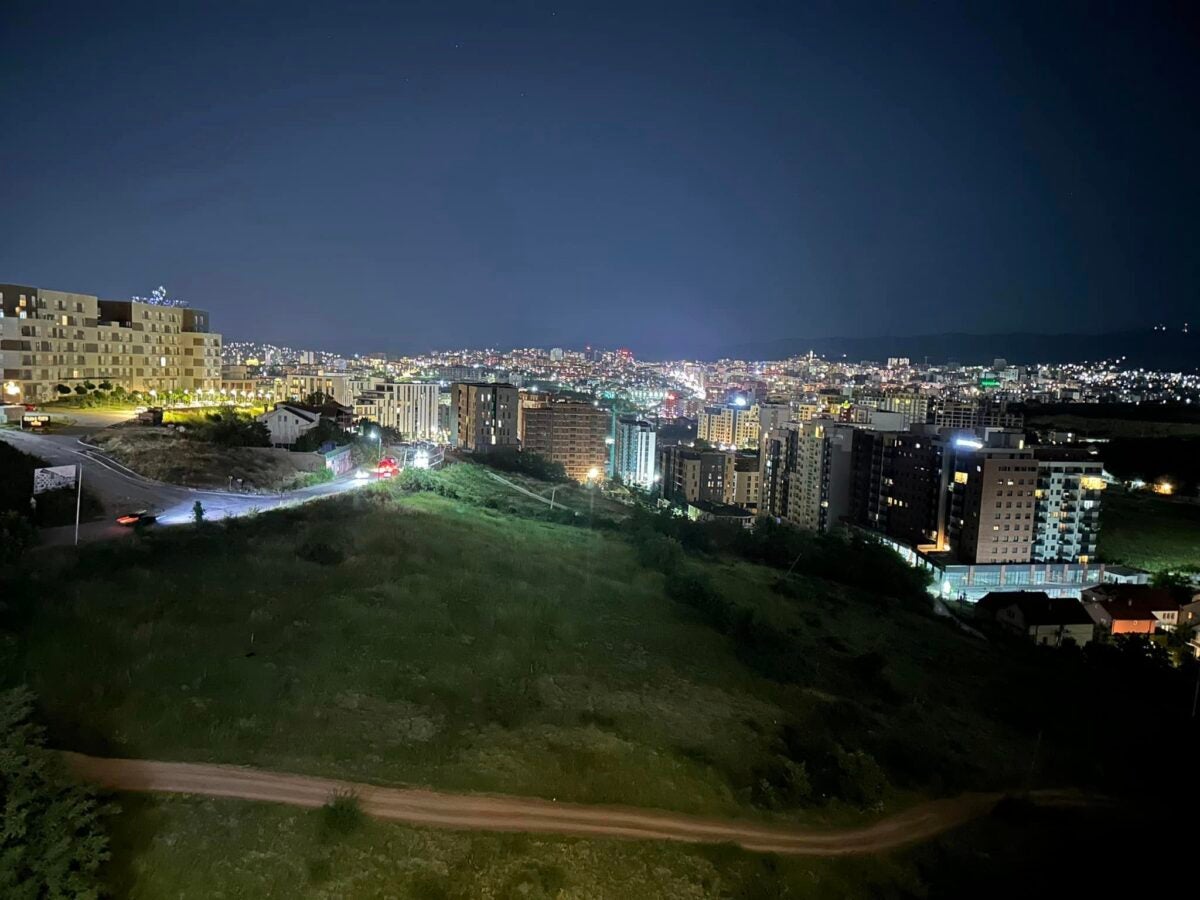
I was not alone on this fantastic voyage. An international gathering assembled in Pristina to attend the grand opening of Kosovo’s National Observatory and Planetarium. Ben Hauck, Kevin Kawai, and I carried the Celestron flag. The University of California at Santa Cruz was represented by Miriam Telus, Pranvera’s PhD advisor, and Raja Guha Thakurta, head of the astronomy department. The American contingent included James Wehner and Keith Hammons, longtime friends of Pranvera; Diana Hannikainen, senior editor at Sky and Telescope; Terry Watson, an Apollo 13 flight controller; and Stephen Ramsden, head of the Charlie Bates Solar Astronomy Project and a major donor to AOK. We were also joined by many friends in the European astronomy community from Switzerland and Italy.
The physical installation of the C-14 was straightforward. On Monday morning, I and another AOK member located north using a compass app on our phones. After both phones agreed, Orhan Sopa, the observatory’s chief engineer and I drilled holes into the top of the isolated 36-centimeter-wide concrete pier to install the mounting studs for a Starizona CGX-L pier adapter. After mounting the C-14 atop the pier, it was time to polar-align the mount after sundown.
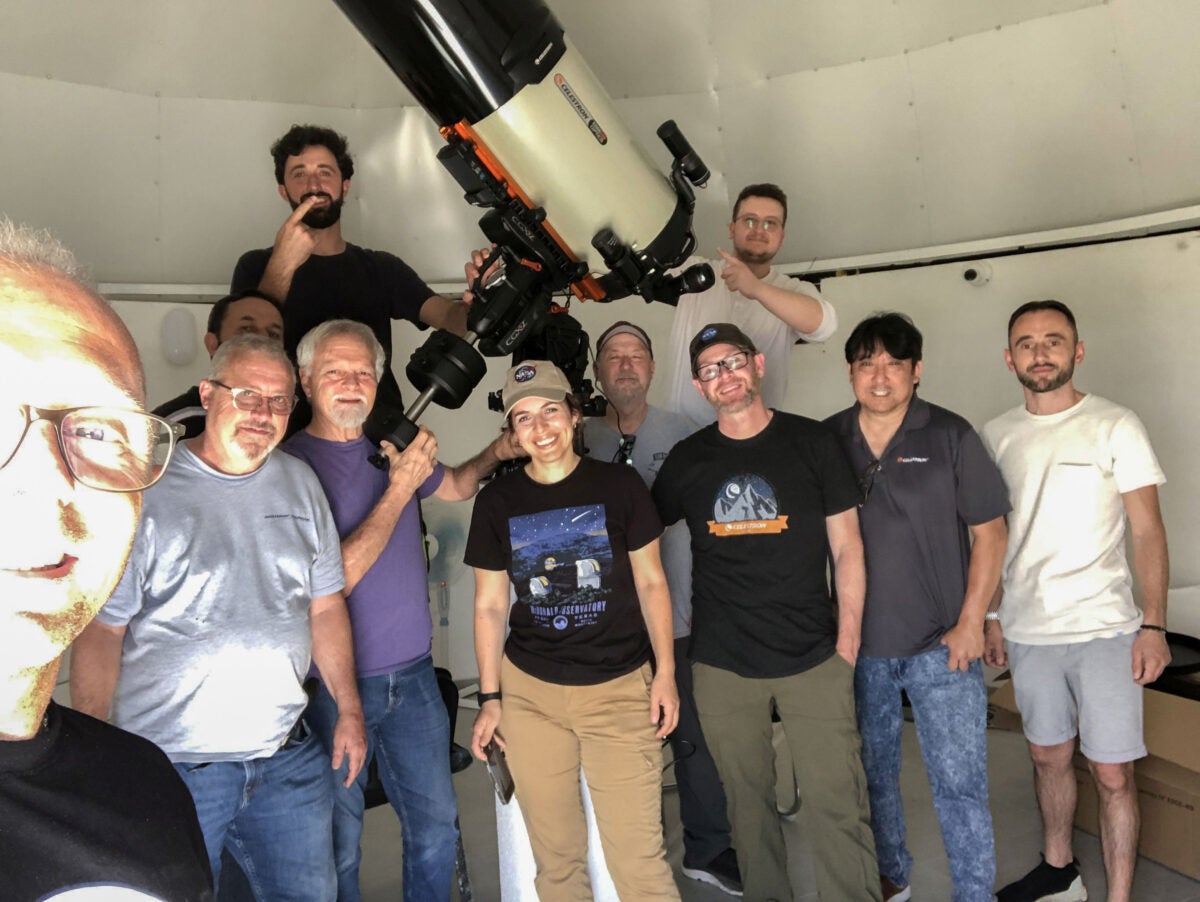
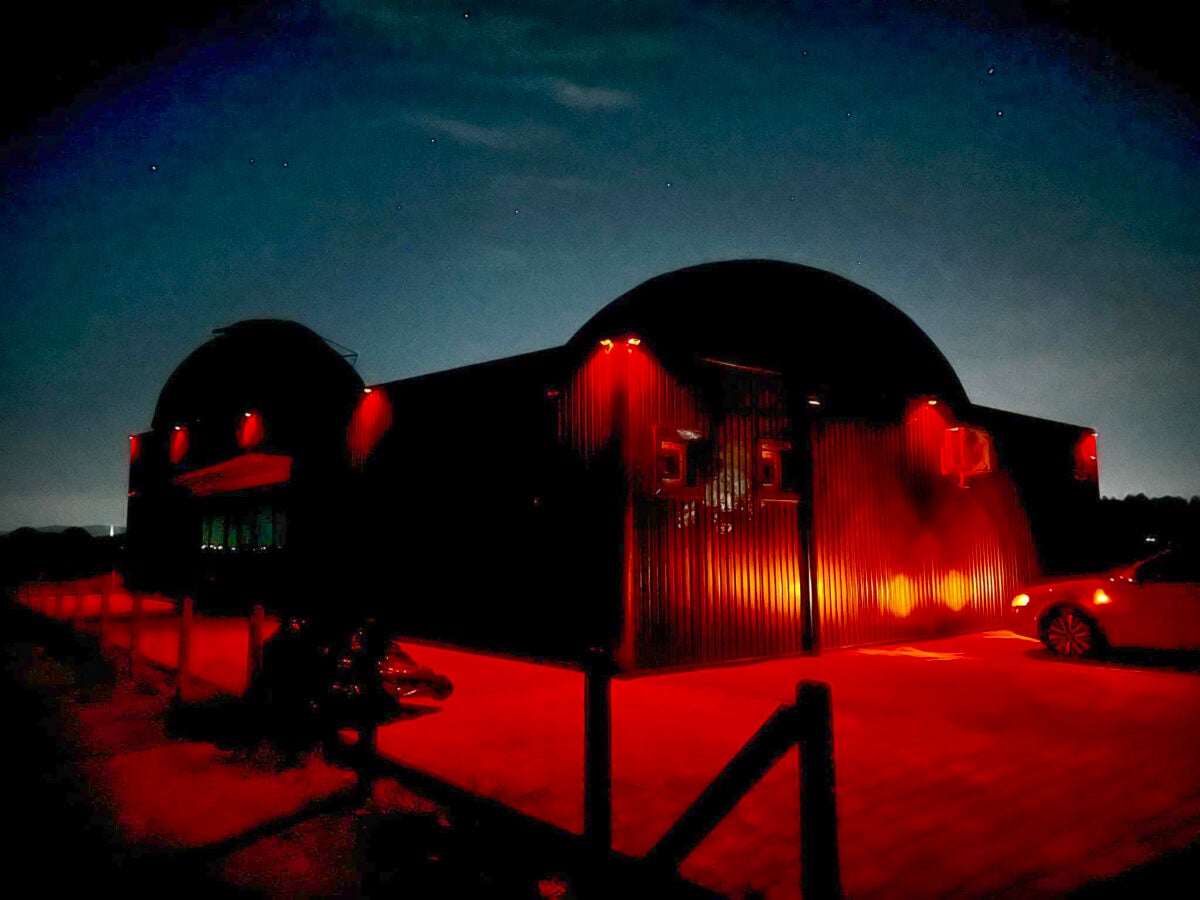
After dusk, several attempts to perform a quick solar-system object alignment on the Moon to allow a classic “first light” ceremony proved frustrating. As the stars came out, the cause of the repeated alignment failure became apparent. The polar axis was pointing 35 degrees west of Polaris. It turned out the observatory dome was made entirely of steel, and it adversely magnetically affected the pointing of our compasses, guiding them 35 degrees west of true north.
After using Polaris to mark the location of true north on the observatory wall, the telescope was demounted the next day and new studs installed in the concrete pier. That night, polar alignment was successful and official “first light” displayed M57, the Ring Nebula, in grand style, despite a near-Full Moon. An emotional Pranvera looked through the eyepiece and saw the realization of her and AOK’s years-long dream coming true. Kosovo now had a working observatory and planetarium.
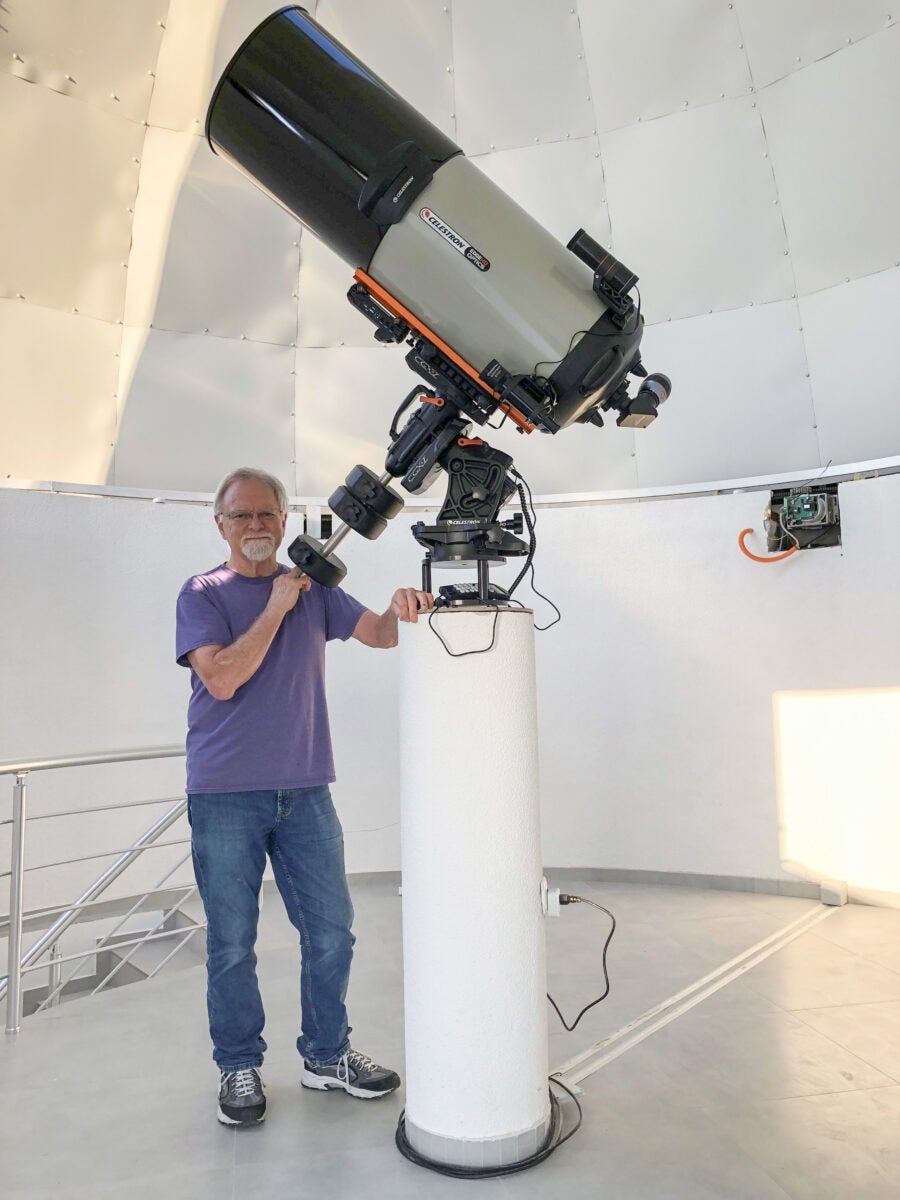
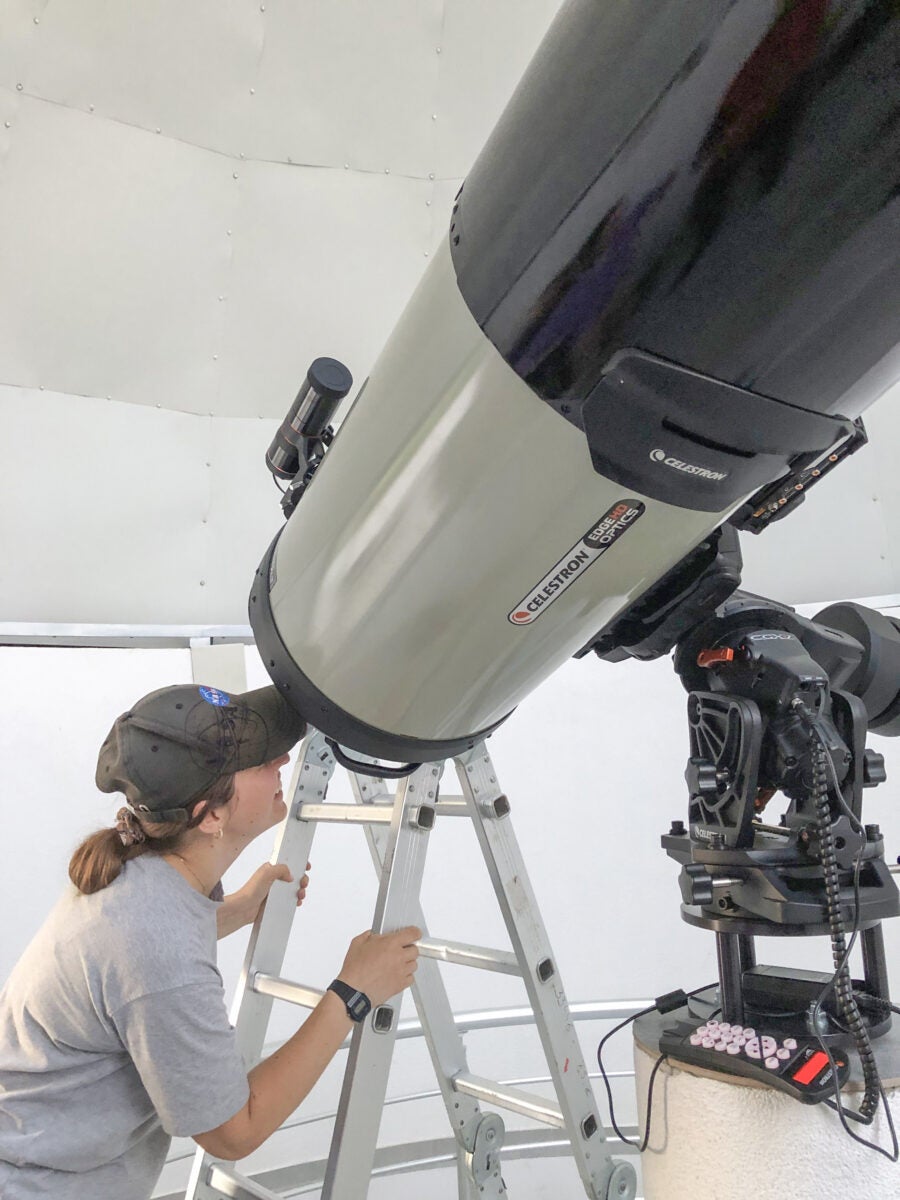
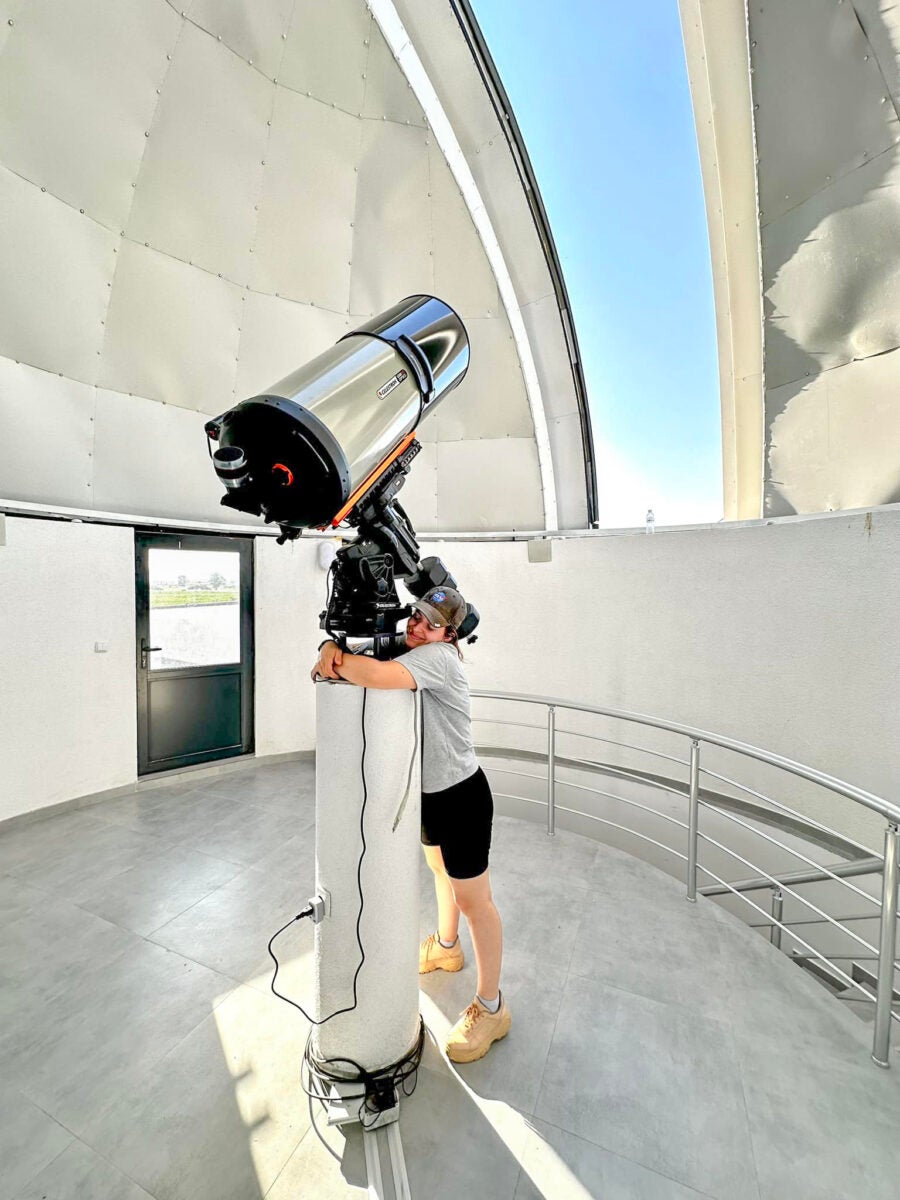
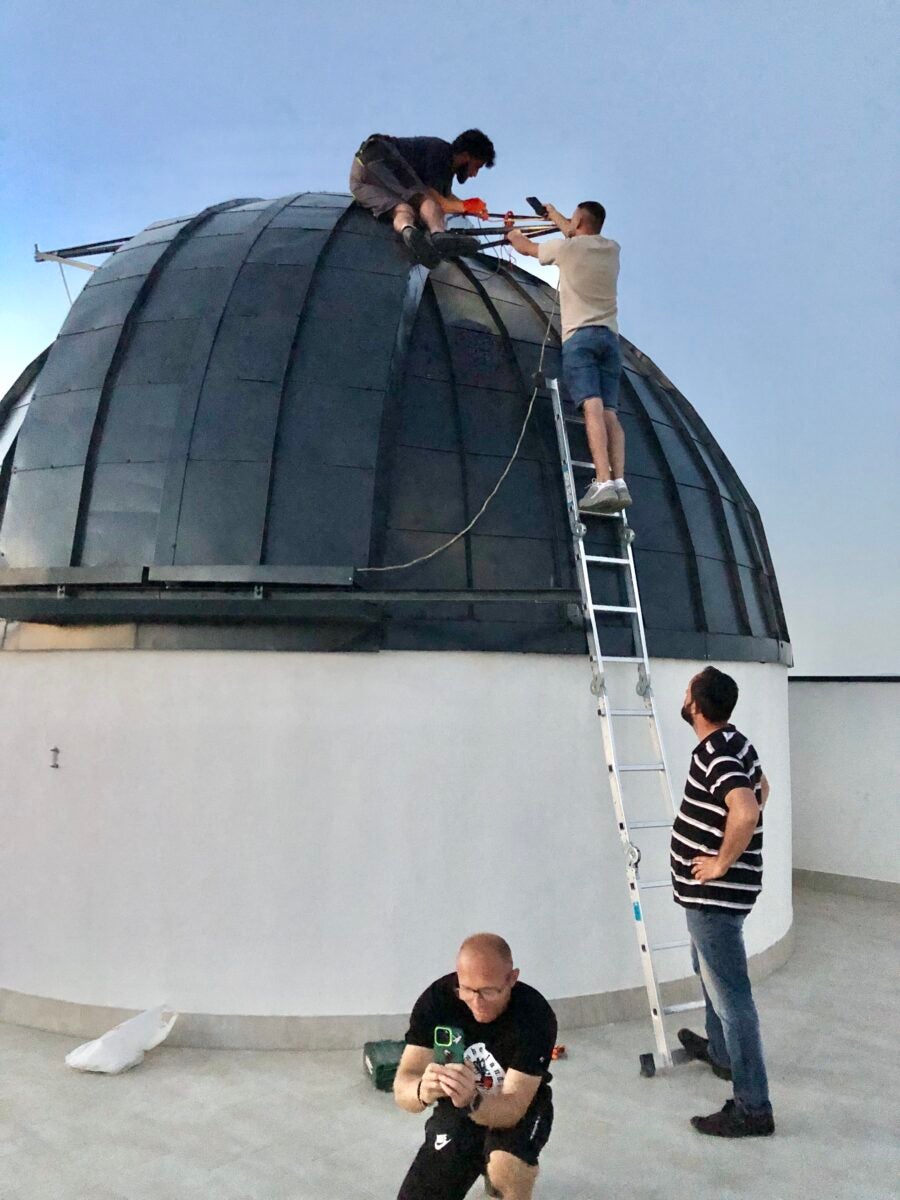
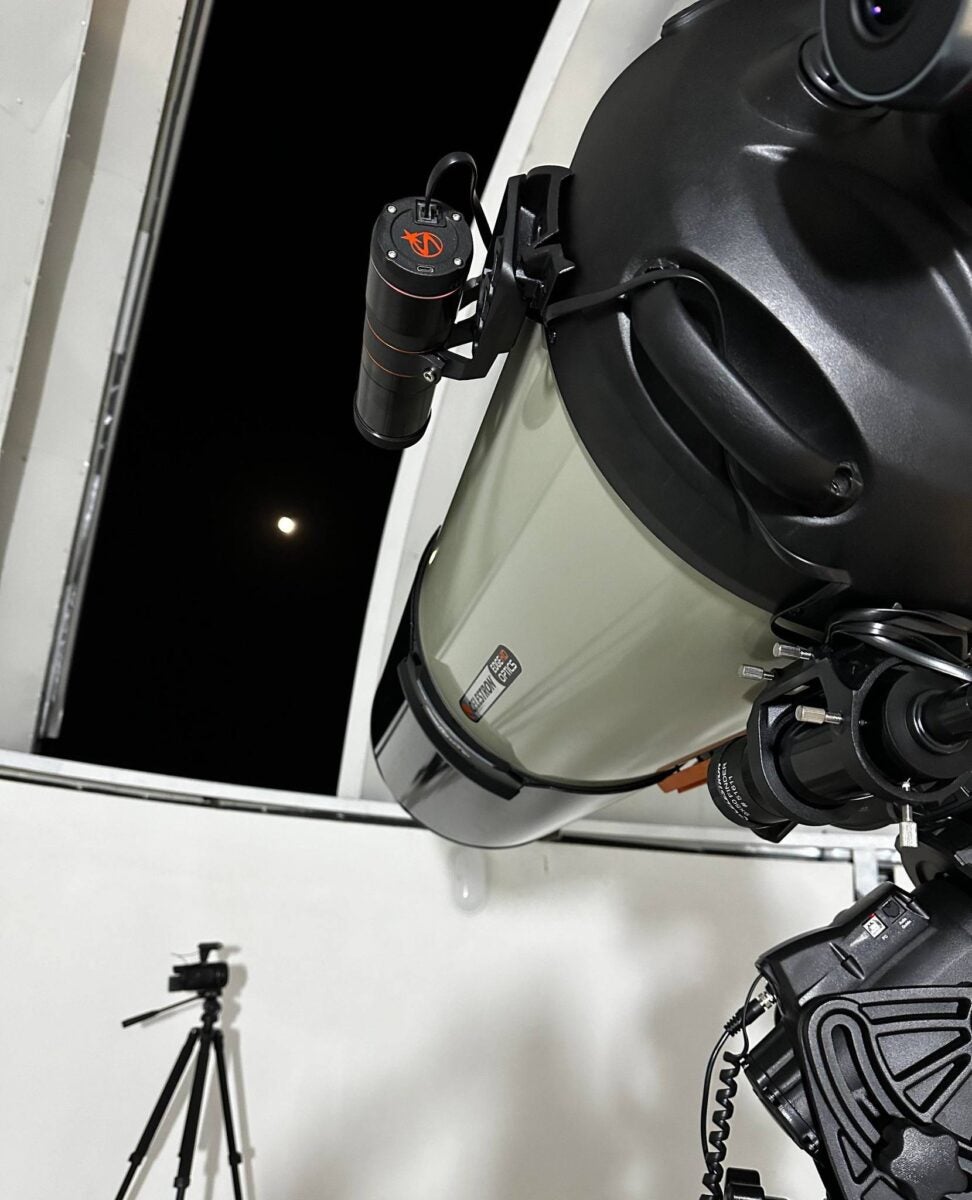
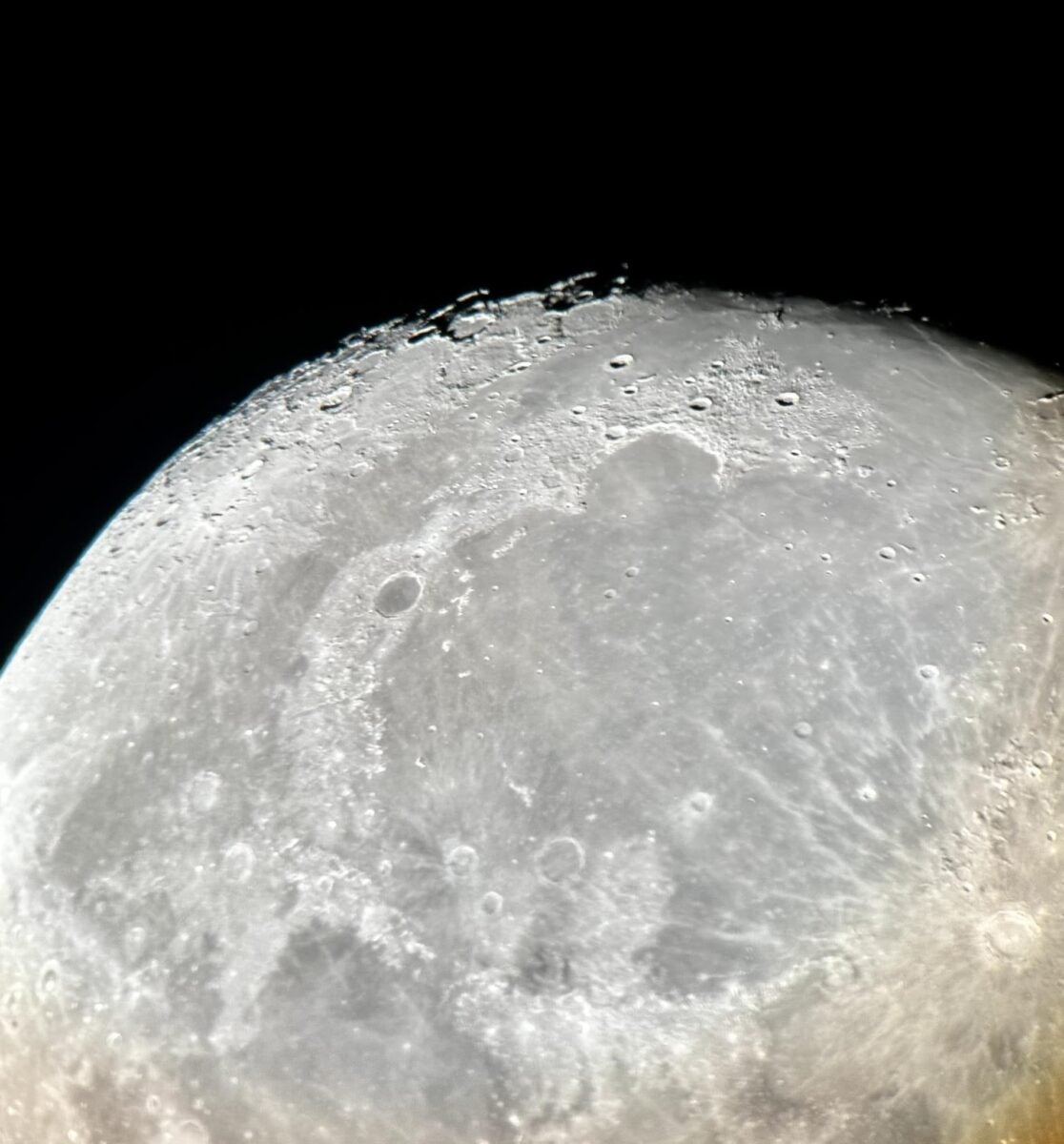
A nationwide celebration
On Wednesday morning, June 19, Stephen Ramsden and I appeared on a half-hour morning talk show on KLAN TV in Pristina where we were interviewed about our impressions of Kosovo and the observatory. AOK board member Bujar Mehmeti, a Ph.D. candidate in medical physics at the University of Wisconsin-Madison, provided flawless translation into Albanian.
At midmorning Wednesday, the entire group of foreign visitors and the AOK board were invited to an audience with Glauk Konjufca, the president of the Kosovar parliament, a position equivalent to the U.S. speaker of the House. The young president spoke with us in perfect English about the importance of education and scientific literacy for the future prosperity of Kosovo.
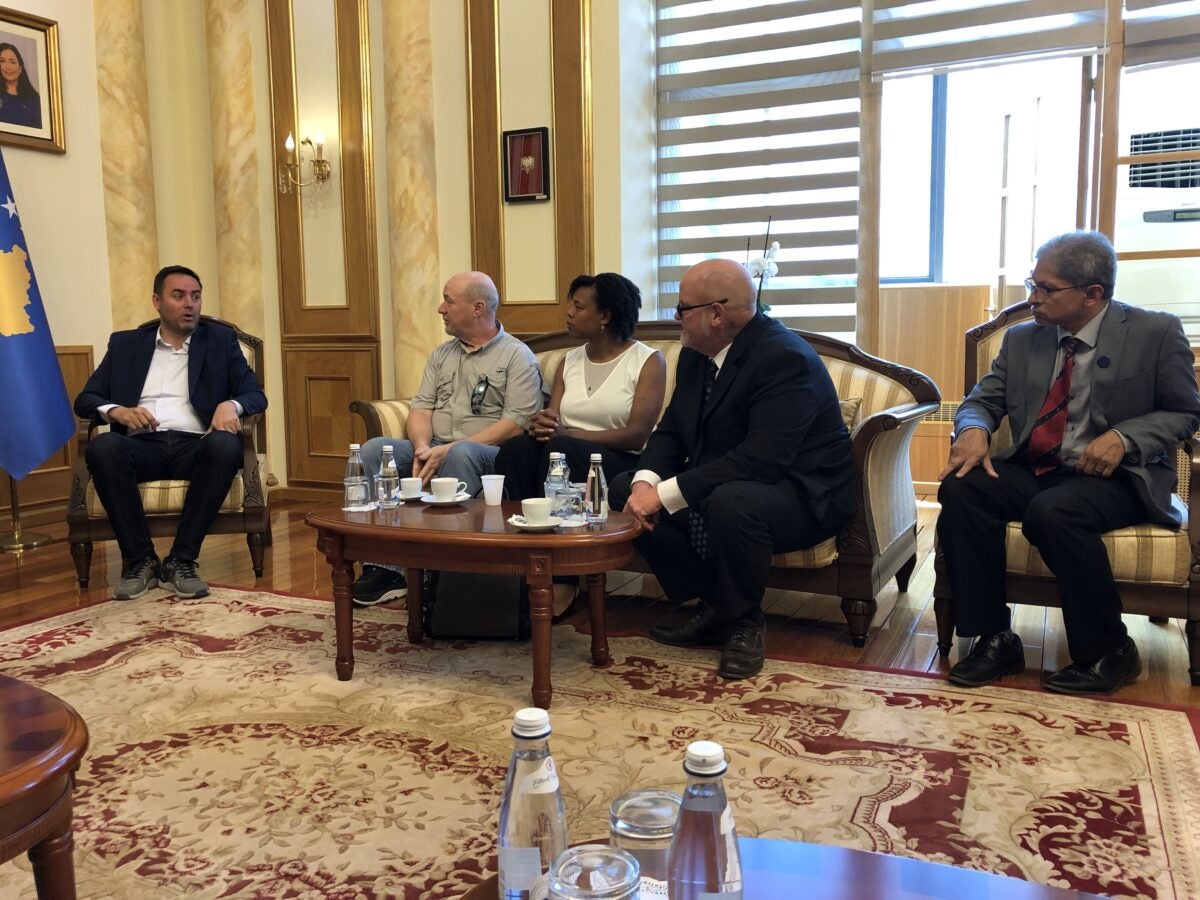
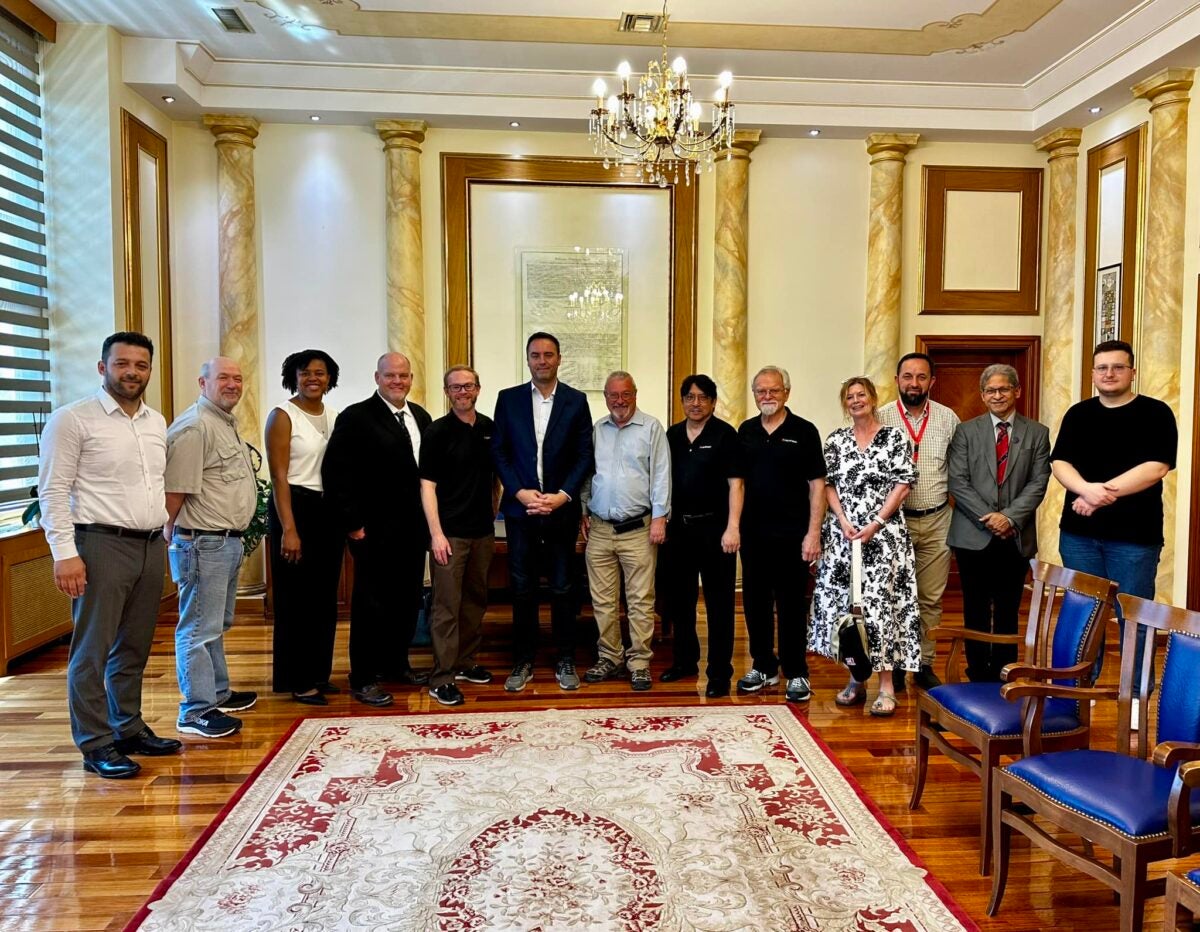
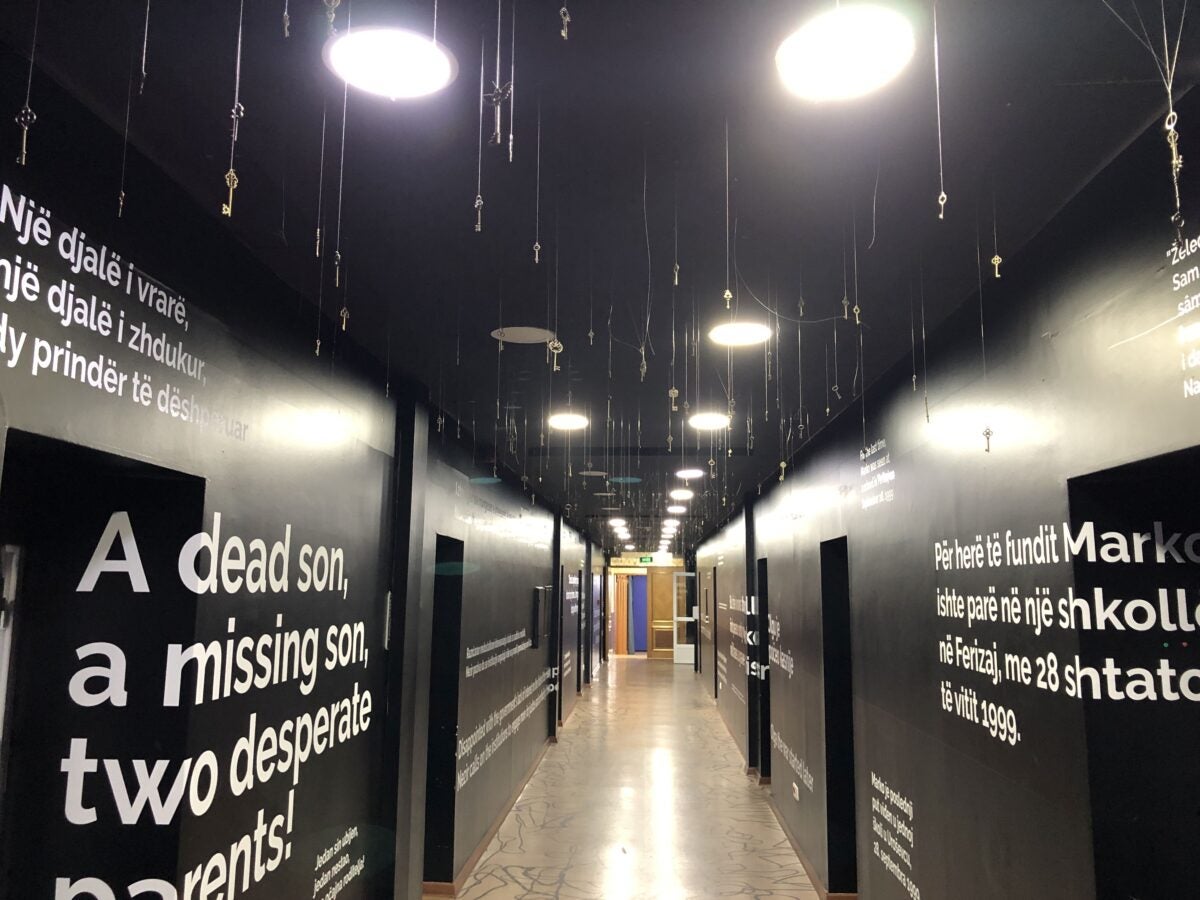
The official observatory grand opening ceremonies were held on Wednesday afternoon. In attendance were Arberie Nagavci, the Kosovo Minister of Education, and Qemajl Aliu, the mayor of the town of Shtime where the observatory was located. Several hundred curious and enthusiastic people attended the ceremony despite unseasonably high temperatures. The ceremony was preceded by the national anthems of both Kosovo and the United States followed by remarks by the education minister, the mayor, the board of AOK, myself and Kevin Kawai representing Celestron, Stephen Ramsden, and Pranvera herself. She delivered an impassioned outpouring of gratitude for all who had supported AOK and the observatory project from its beginnings as a mere dream to the facility being celebrated by the enthusiastic crowd.
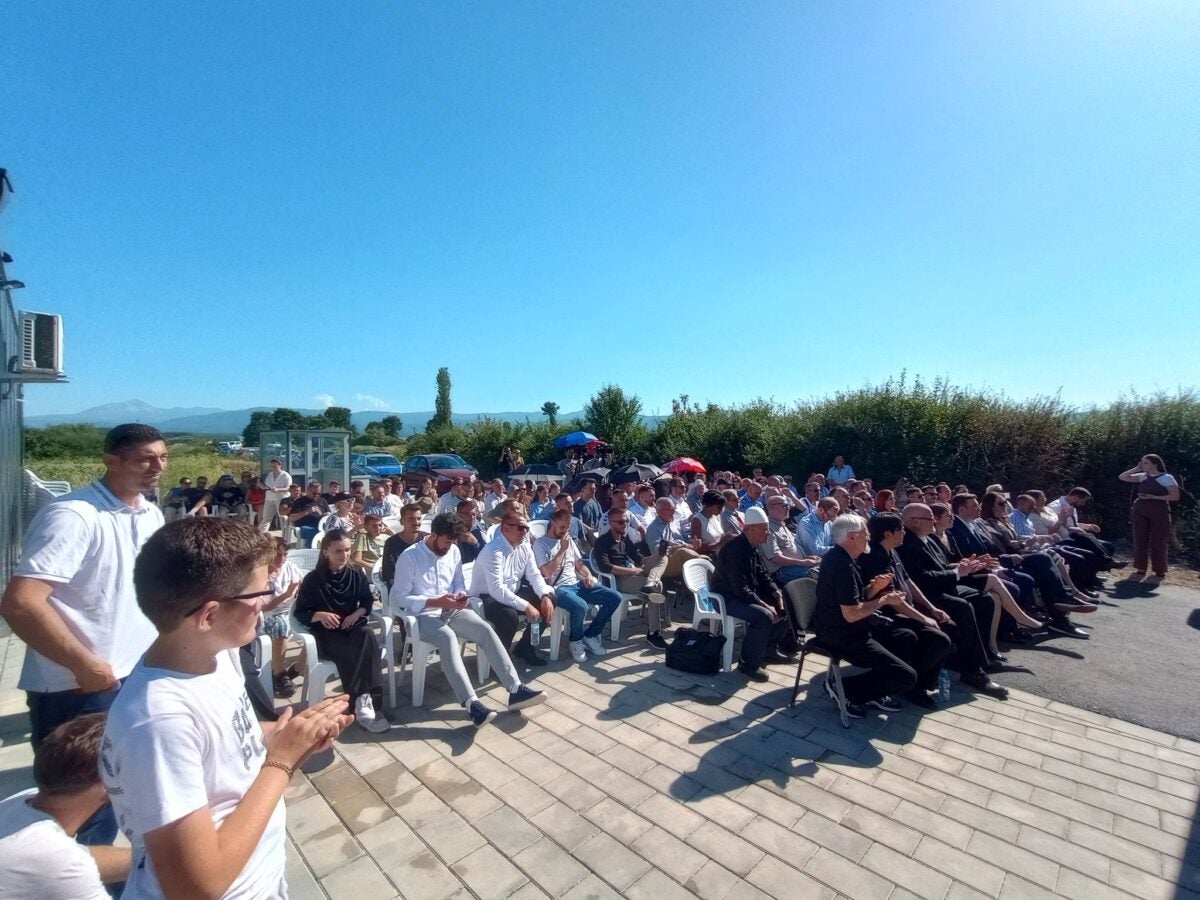
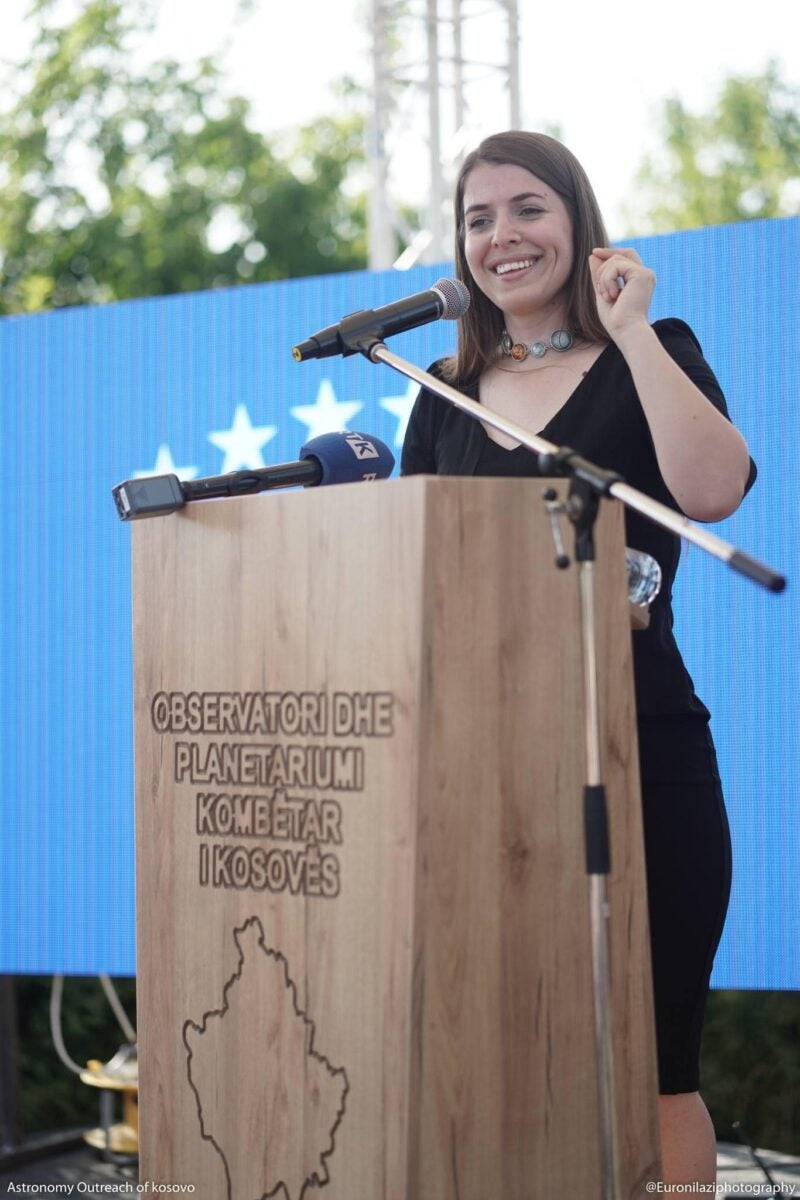
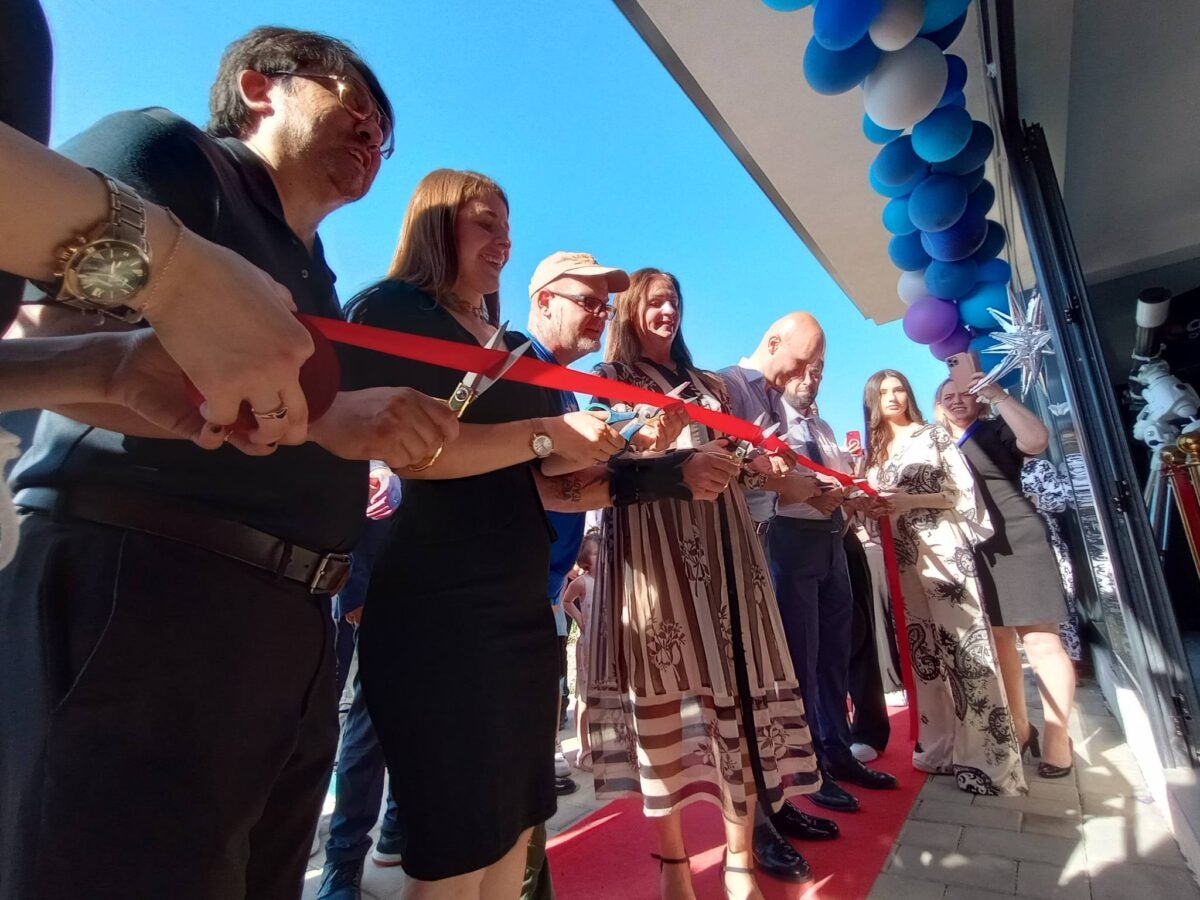
I mentioned the outpouring of gratitude toward the United States by the citizens of Kosovo. This was shown to such a degree that during the ceremony there were tears in my eyes when “The Star-Spangled Banner” was played along with the Kosovar anthem. I was so moved that I forgot what I was going to say and had to improvise a speech on the spot with tears in my eyes.
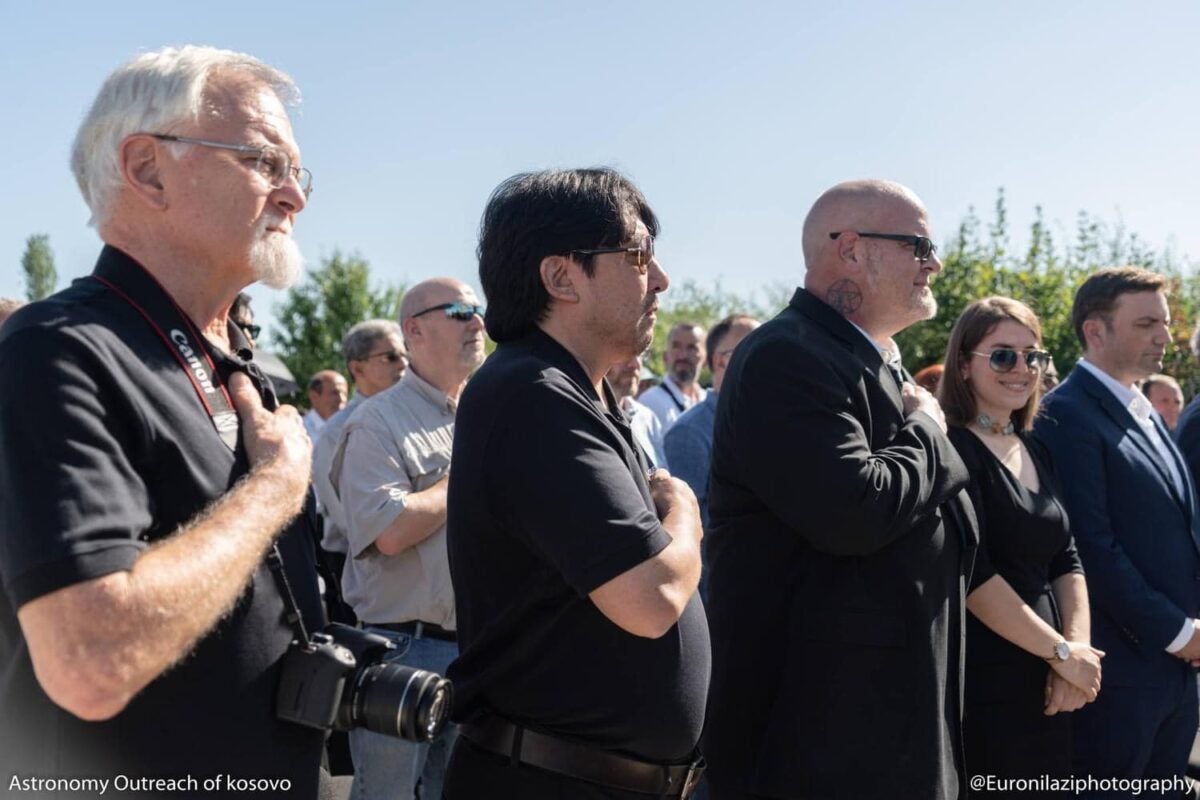
After the ribbon-cutting ceremony, a massive pizza party in the much cooler planetarium display area was followed by solar observing on the planetarium’s rooftop observation deck and tours of the observatory and planetarium. Despite record-high heat for the region, hundreds of smiles proved everyone was thrilled with the facility and the promise that it holds. Unfortunately, hazy conditions prevented public observation that night.
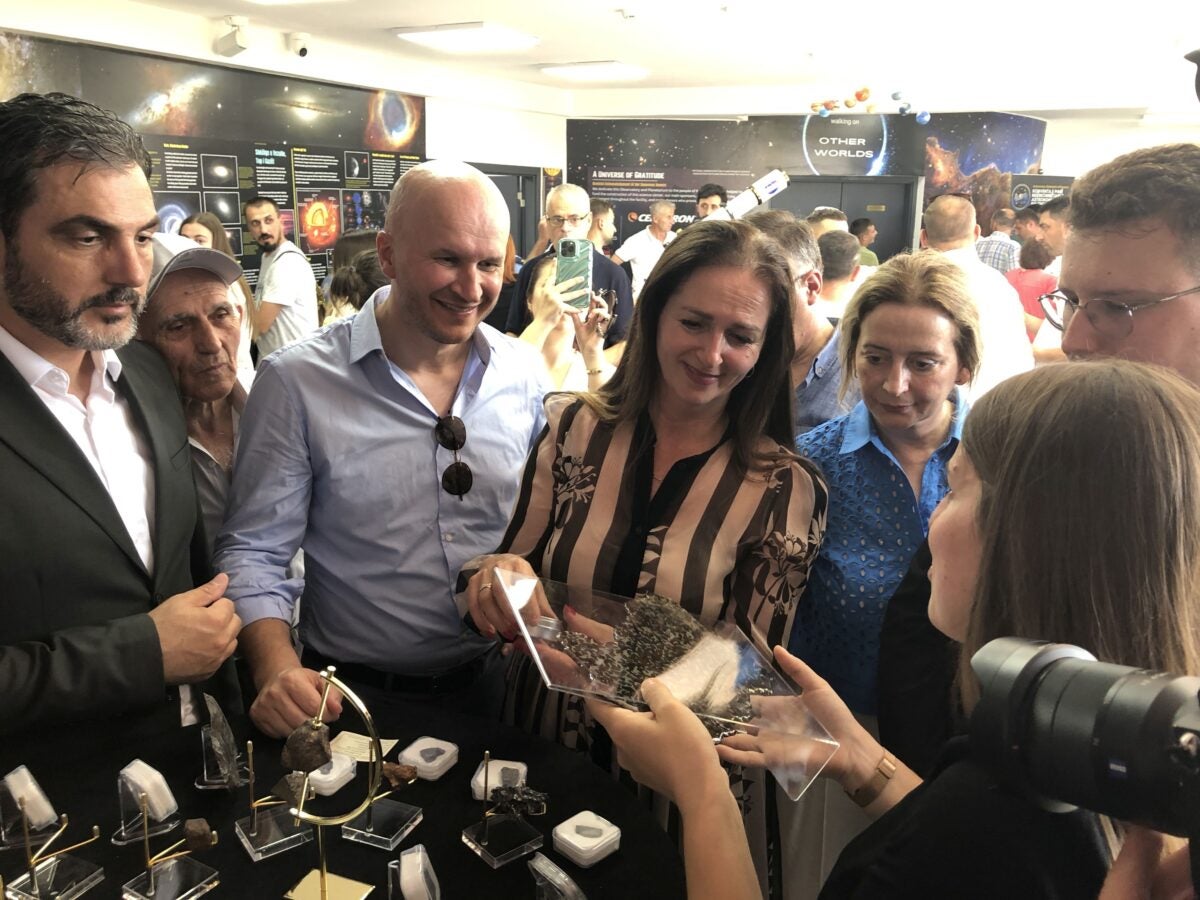
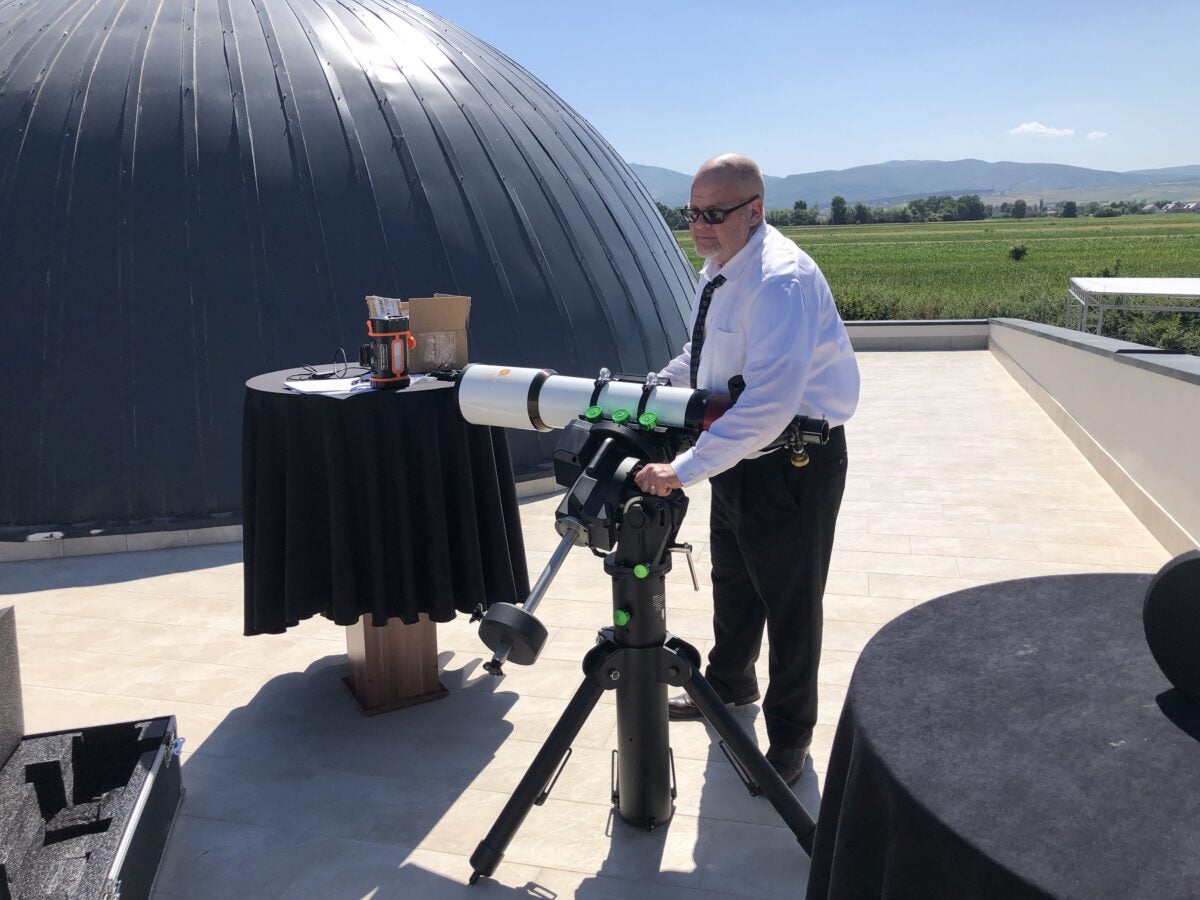
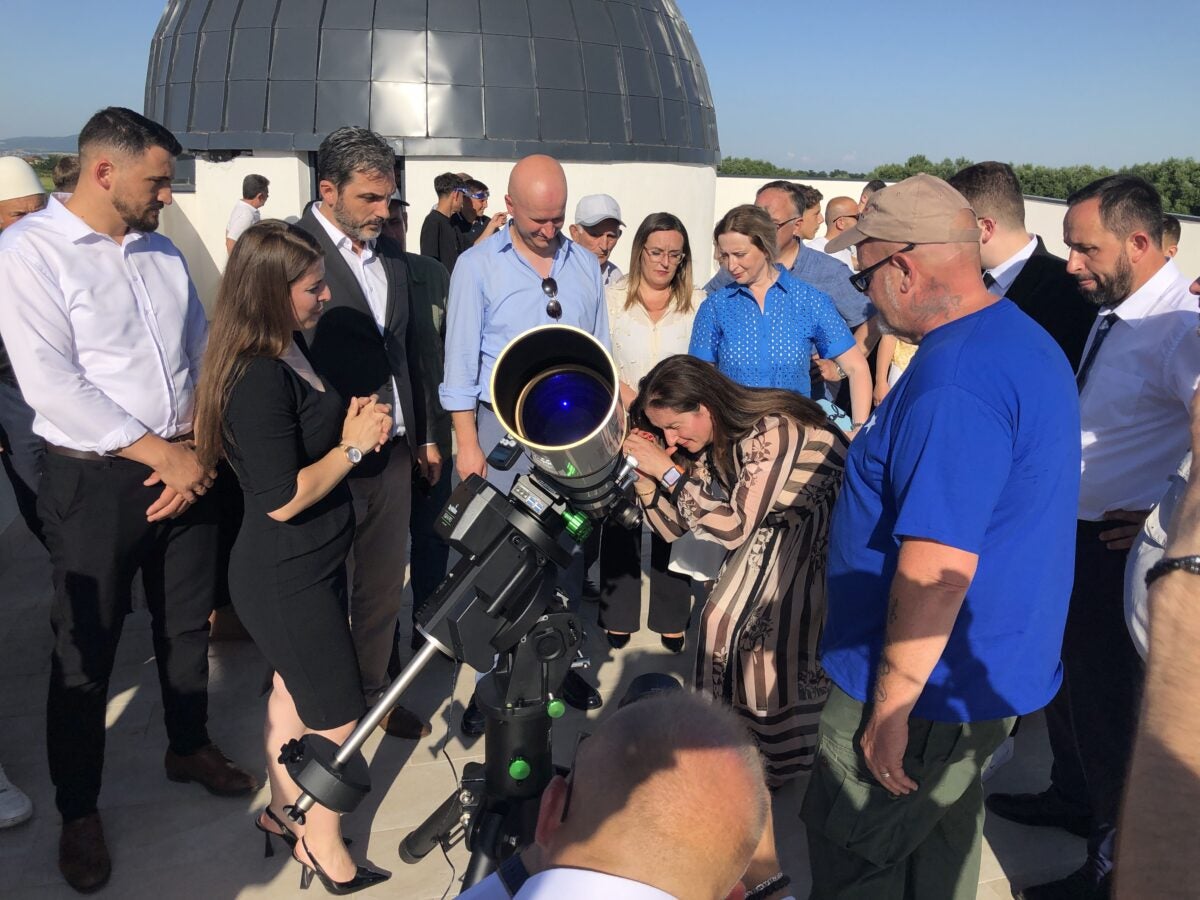
Thursday morning’s highlight was a visit with Aliu, the mayor of Shtime, where he recognized the importance of municipal support for the new Kosovar science facility located outside the town.
Thursday afternoon was filled with astronomical presentations in the planetarium’s lecture hall by the international visitors. I led the schedule with a presentation about the Moon, followed by a diverse array of topics, including meteorites, astrophysics, and space-based observatories. Hundreds more visitors flooded the planetarium, anxious for a look at the C14 telescope and a planetarium show.
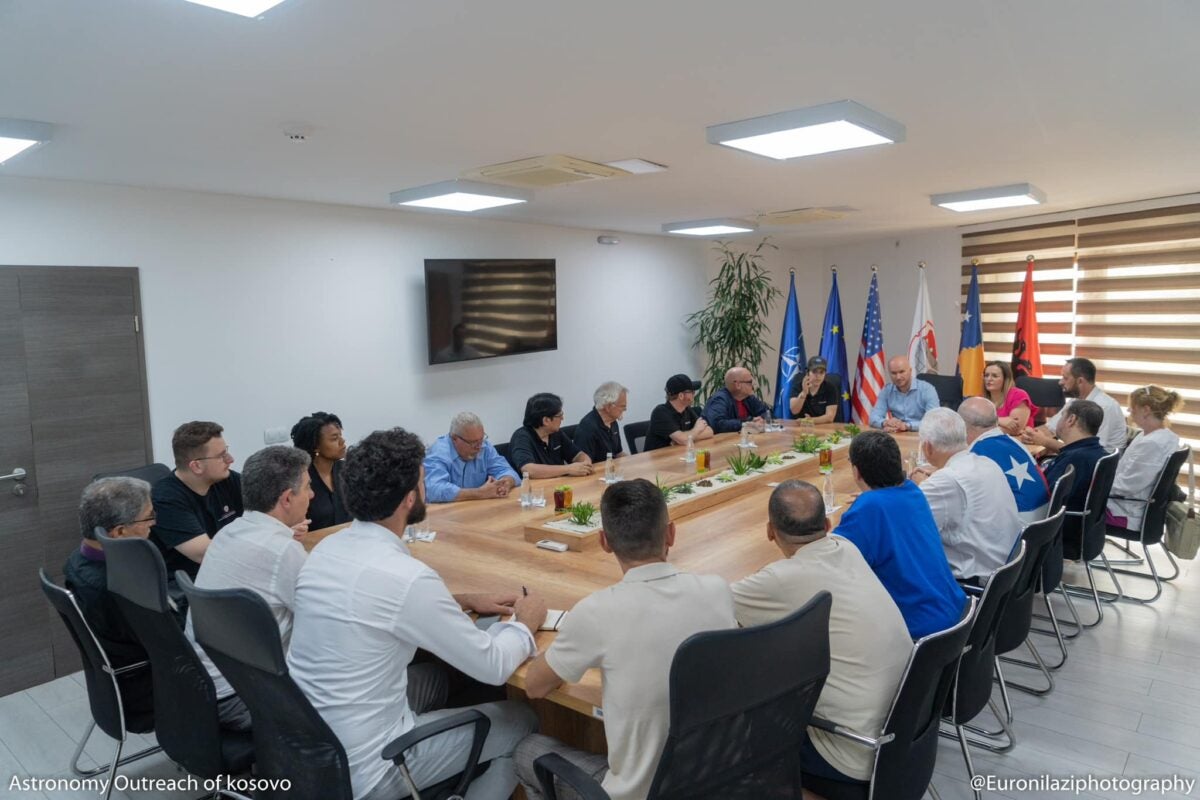
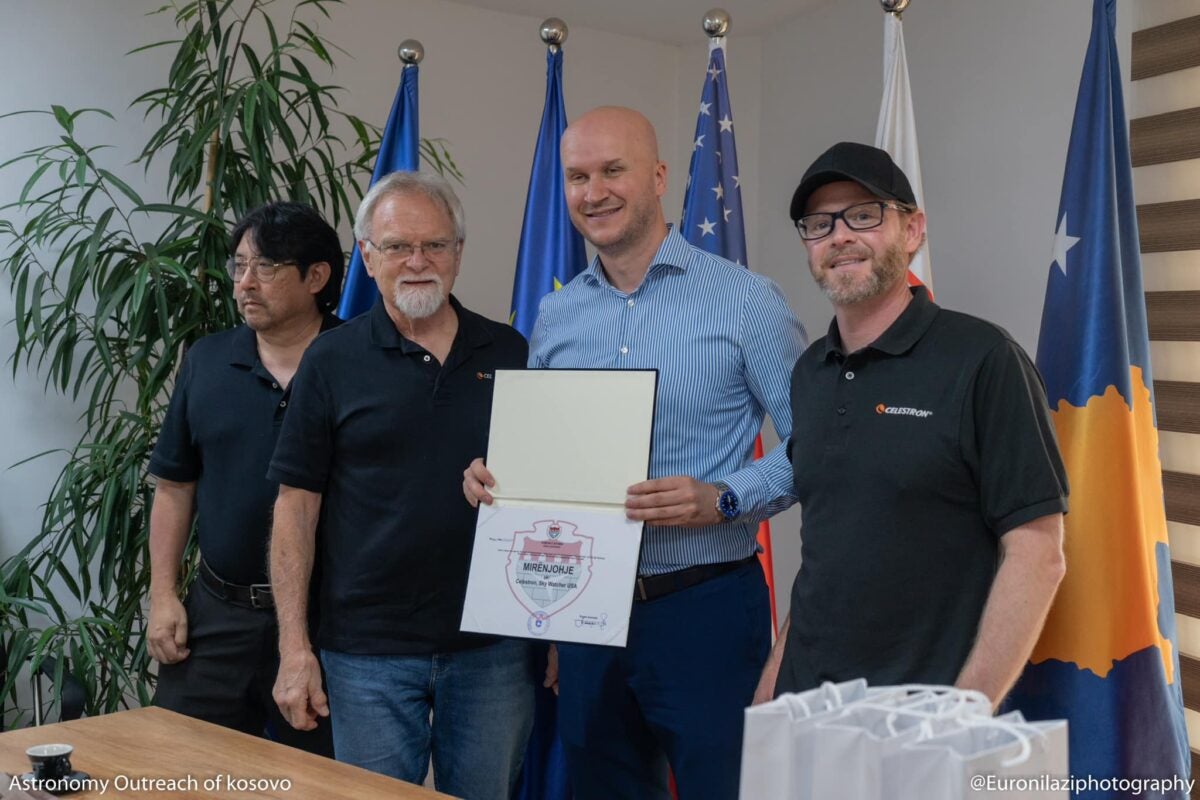
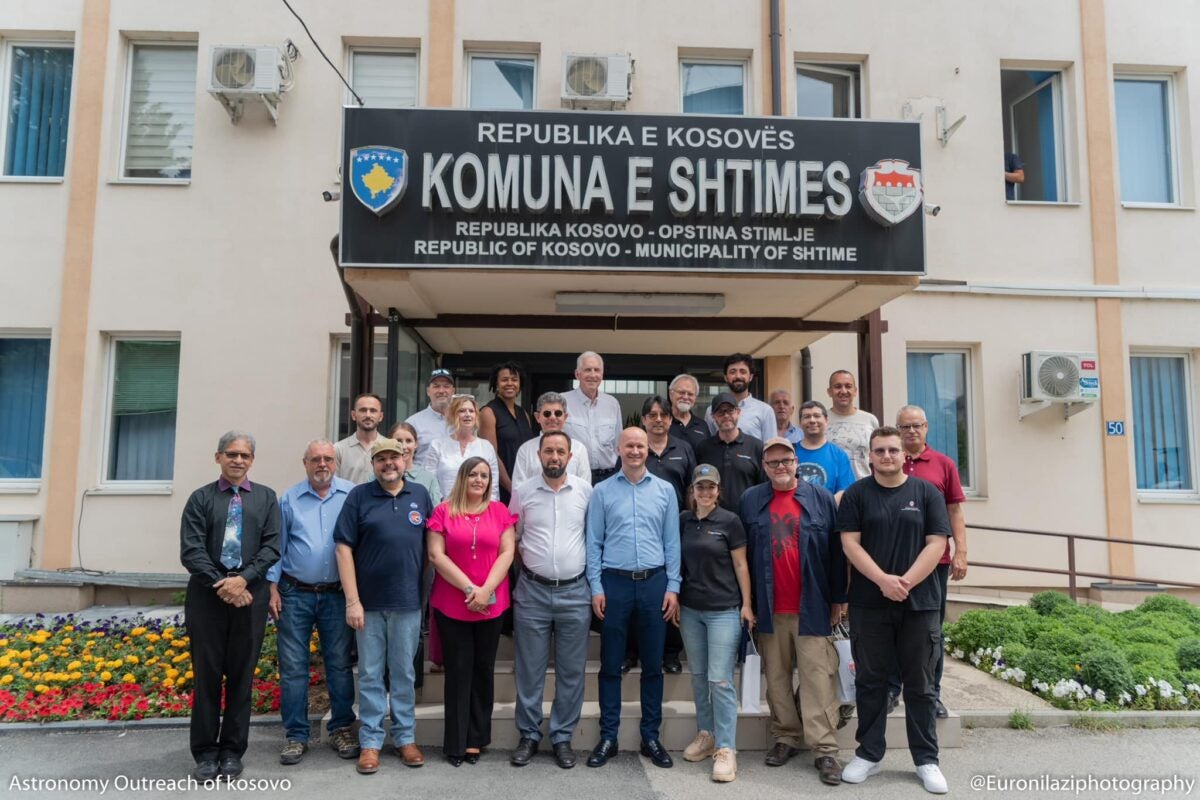
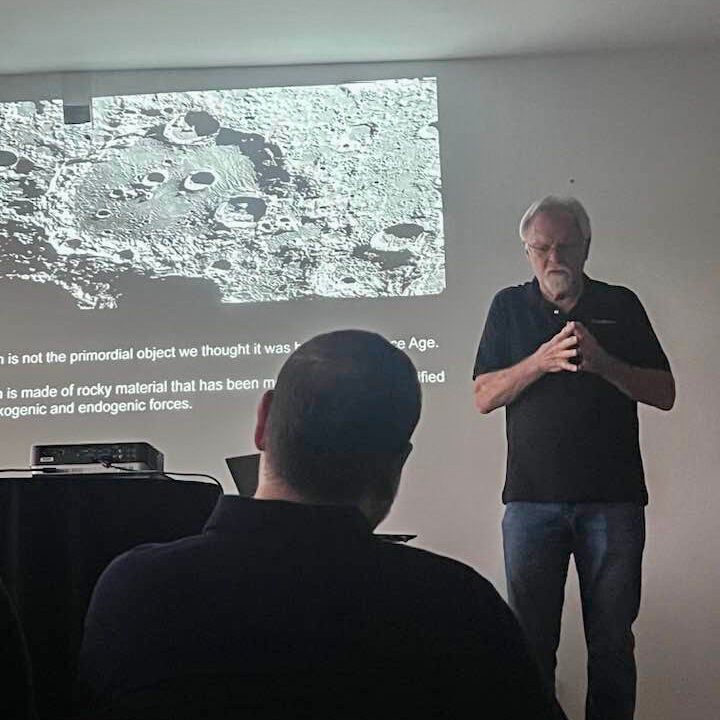
Scars of war
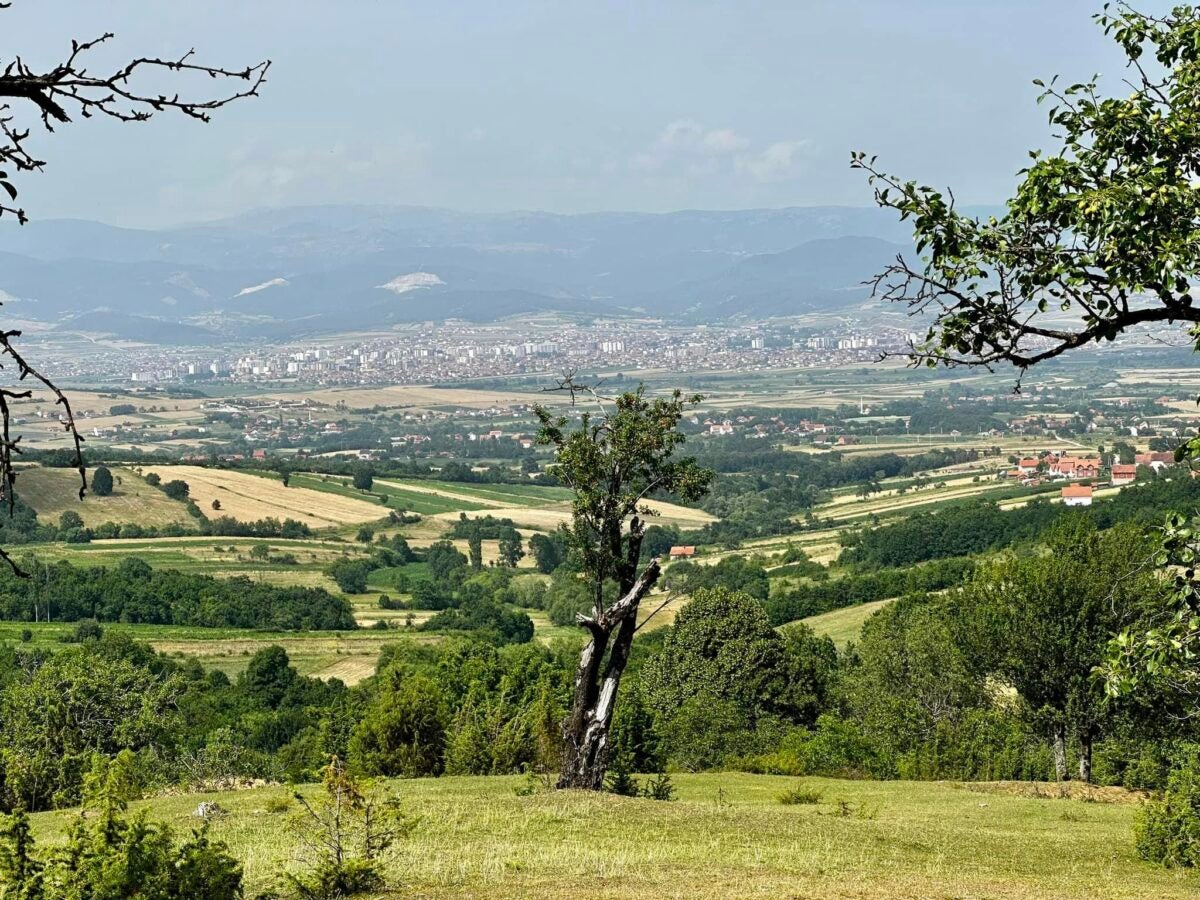
On Friday we were free to explore Kosovo itself. Here is where the depth of Kosovo’s love of the United States sank in. American flags are widely displayed side-by-side with the Kosovar flag. Major streets in Pristina are named after President Bill Clinton; his secretary of state, Madeline Albright; and Senator Bob Dole. All these individuals played a key role in the American intervention that prevented the Serbs from performing a complete genocide on the Kosovar people.
We visited the tomb of Adem Jashari, the national hero who initially led the battle for Kosovar independence from Serbia until he and his entire extended family of 59 men, women, and children were slaughtered by a Serbian assault in 1999. Fifty-nine white marble tombs with an eternal guard hold the remains of the Jashari family in a memorial hauntingly like the Tomb of the Unknown Soldier at Arlington National Cemetery in Virginia.
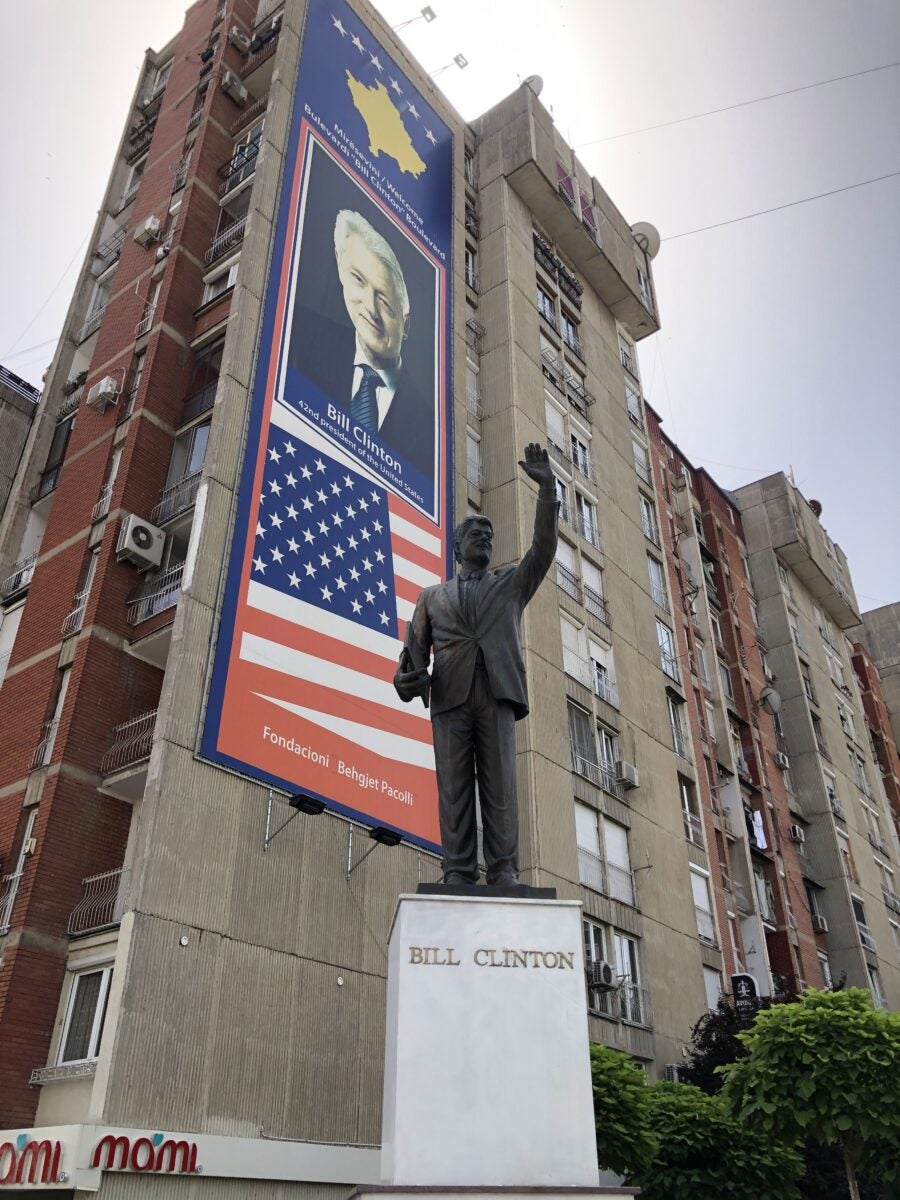
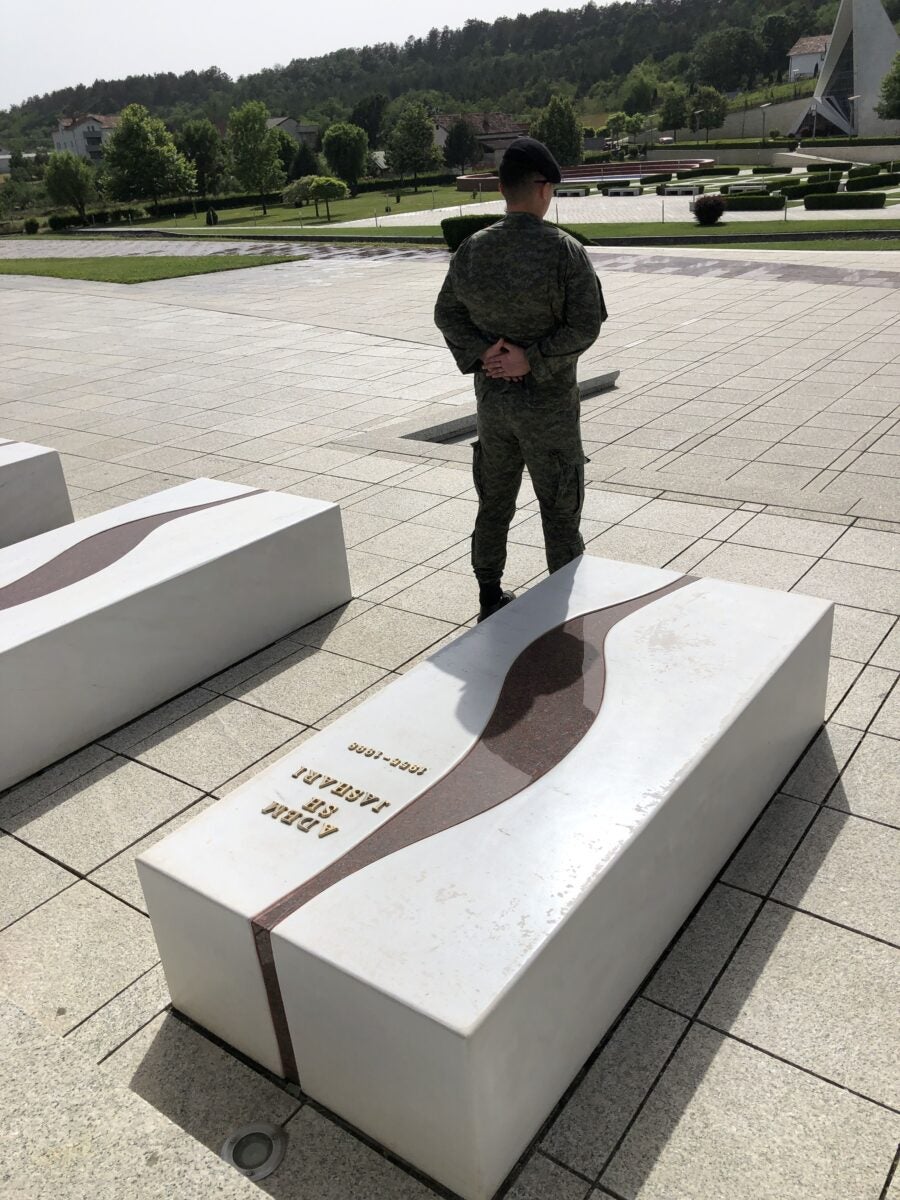
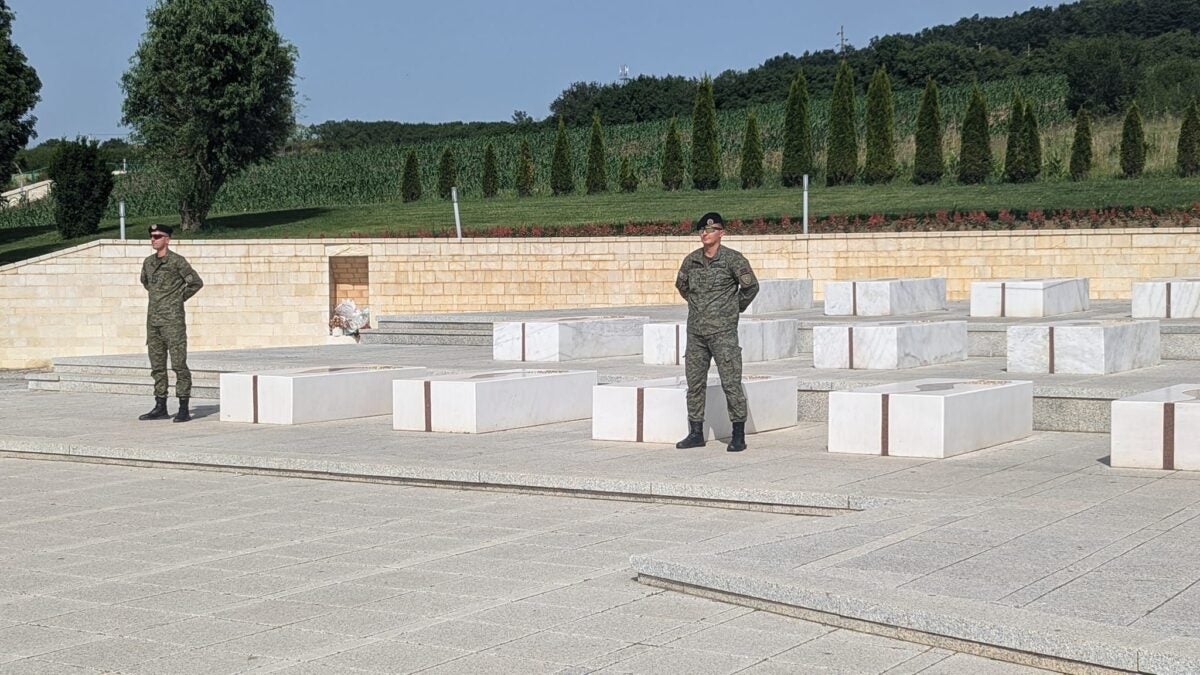
The extent of the Serbian atrocities inflicted on Kosovo were hammered home when we discovered that one of the many acts of genocide had occurred in Pranvera’s home village of Vushtrri. Here, 250 citizens were gunned down by Serbian soldiers. Among the dead was Pranvera’s grandfather.
It was across the highway from the Jashari memorial that I experienced my most heart-wrenching display of pure gratitude to the United Stares from the citizens of Kosovo. A group of people were seated at a refreshment stand and recognized us as Americans from our speech. They pleaded with us to join them and allow them to purchase our meal, but sadly we couldn’t stay long as we had dinner plans with Pranvera’s parents on the family farm.
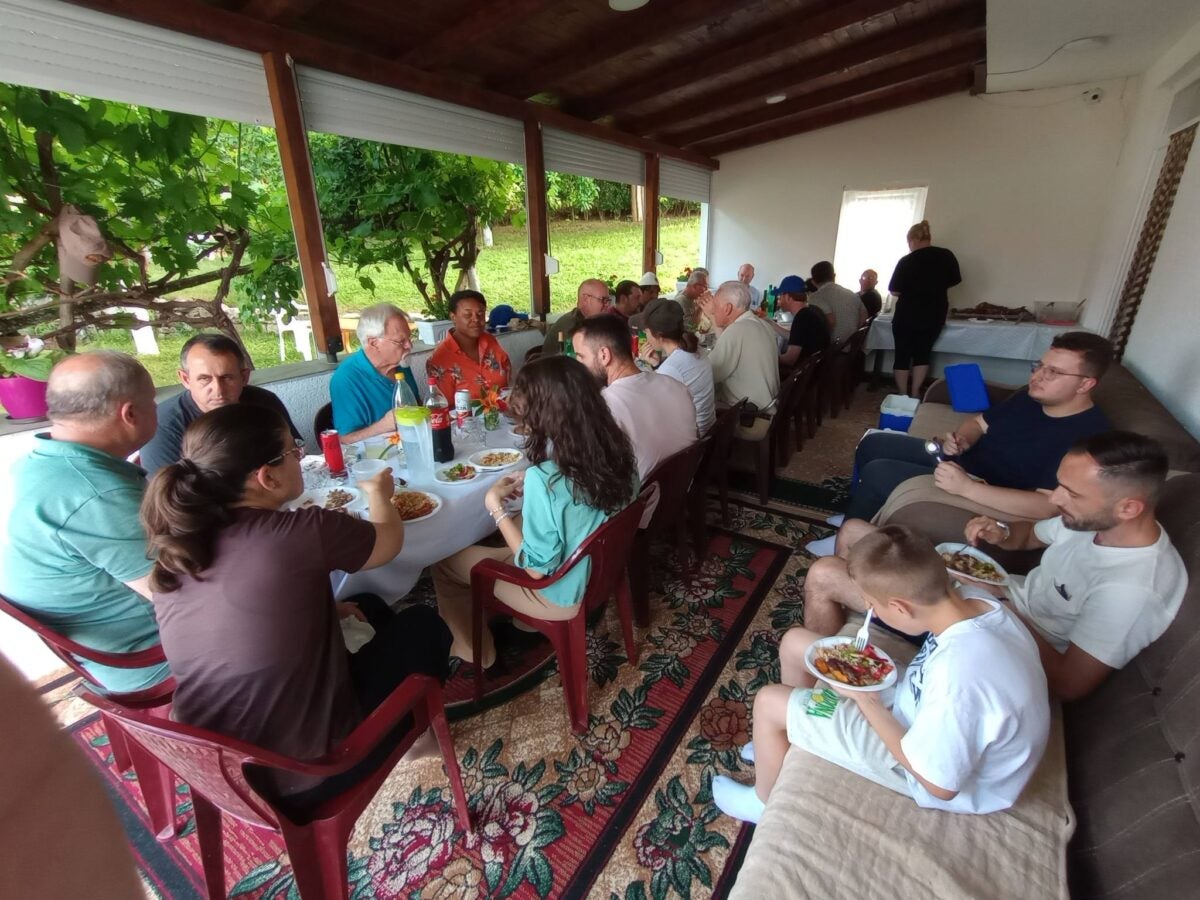
But what brought tears to my eyes was a Kosovar army veteran seated with them. He had been shot during the war, leaving his face so badly disfigured by the bullet that his mouth was offset to the left side of his face. When he heard I was a U.S. military veteran, he stood up, placed his hand over his heart, bowed deeply to me, and sobbed as he thanked me as an American for saving him and his country. Words cannot describe how I felt as this army veteran who fought in the war and bore terrible scars from the ordeal was thanking me for America’s help in a war that was long after my own service in Vietnam.
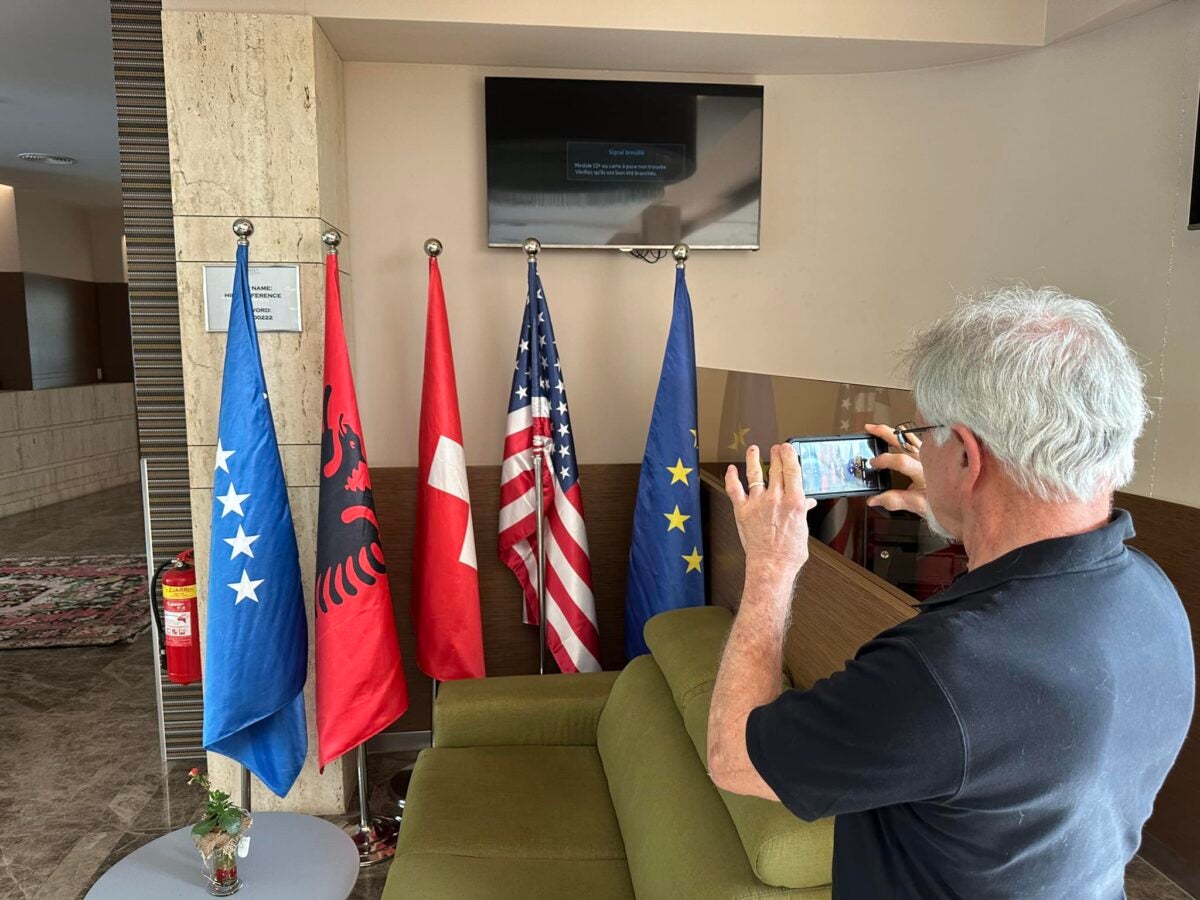
Lessons from Kosovo
My week in Kosovo started as an astronomy mission but ended as a stunning lesson about the freedoms and opportunities we have here in the United States that so many people take for granted. Kosovo is a Muslim country but infused with an enormous live-and-let-live culture of tolerance and acceptance of western ways. It is also a young country: The population, after the war, averages about 30 years old and they are motivated like no other people I have recently encountered. Young Kosovars embrace western culture while retaining their Kosovo roots. And there are as many young girls in AOK as there are boys.
Wonderful things are happening in Kosovo, and I feel extraordinarily privileged not only to have visited this beautiful and dynamic country, but to be a small part of an undertaking that will spread science and astronomy across this young and developing country. It is rare that I feel I have seen something truly extraordinary, and during my week in Kosovo, I did.

